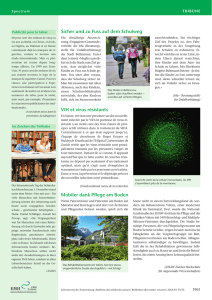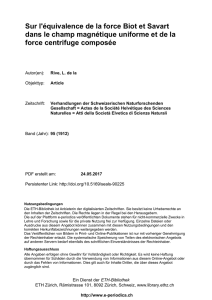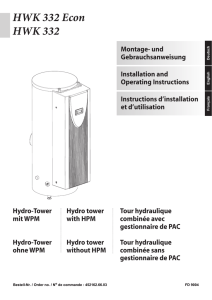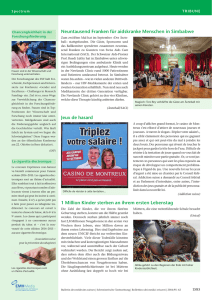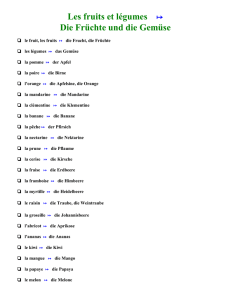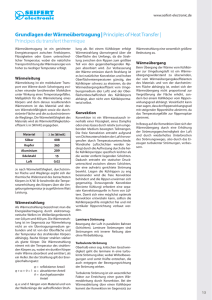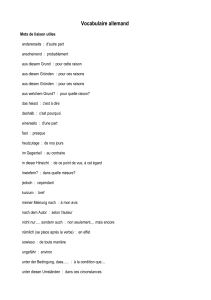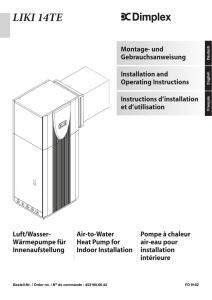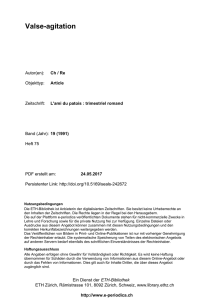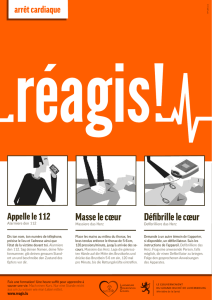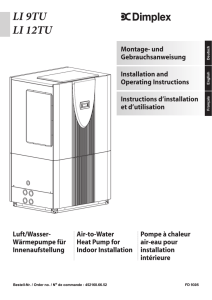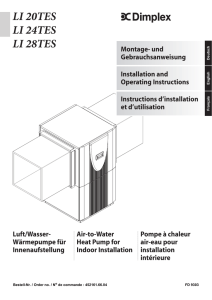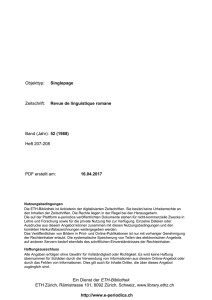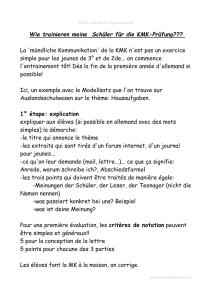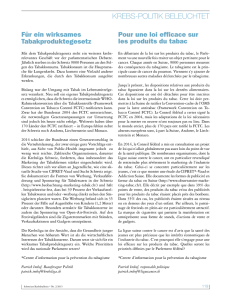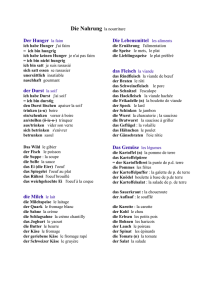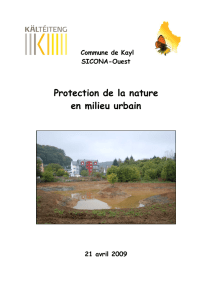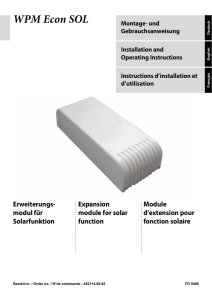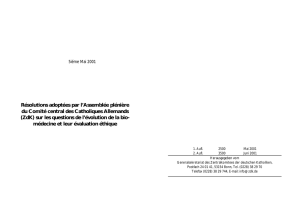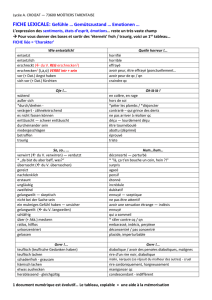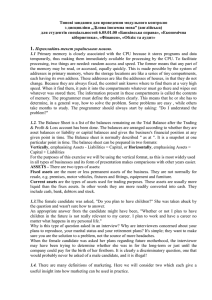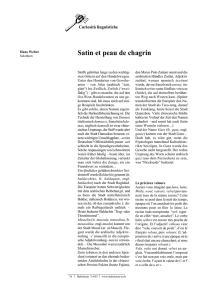Montageanweisung Sixmadun SMLI-XP-20 / 24 / 28EL
publicité
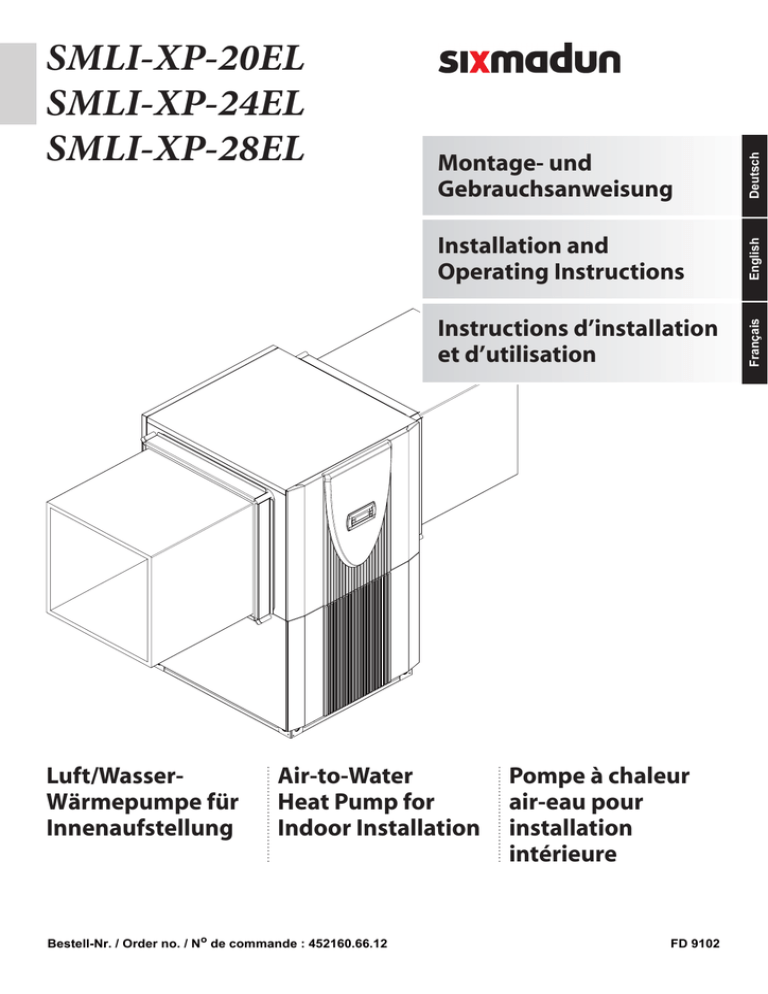
Luft/WasserWärmepumpe für
Innenaufstellung
Instructions d’installation
et d’utilisation
Air-to-Water
Heat Pump for
Indoor Installation
Bestell-Nr. / Order no. / No de commande : 452160.66.12
Deutsch
Installation and
Operating Instructions
English
Montage- und
Gebrauchsanweisung
Français
SMLI-XP-20EL
SMLI-XP-24EL
SMLI-XP-28EL
Pompe à chaleur
air-eau pour
installation
intérieure
FD 9102
Inhaltsverzeichnis
Bitte sofort lesen ........................................................................................................................ DE-2
1.1
1.2
1.3
1.4
2
Wichtige Hinweise ............................................................................................................................... DE-2
Bestimmungsgemäßer Gebrauch........................................................................................................ DE-2
Gesetzliche Vorschriften und Richtlinien ............................................................................................. DE-2
Energiesparende Handhabung der Wärmepumpe .............................................................................. DE-2
Verwendungszweck der Wärmepumpe .................................................................................... DE-3
2.1 Anwendungsbereich ............................................................................................................................ DE-3
2.2 Arbeitsweise ........................................................................................................................................ DE-3
3
Lieferumfang............................................................................................................................... DE-3
3.1 Grundgerät........................................................................................................................................... DE-3
3.2 Schaltkasten ........................................................................................................................................ DE-4
3.3 Wärmepumpenmanager ...................................................................................................................... DE-4
4
Zubehör ....................................................................................................................................... DE-4
4.1 Fernbedienung..................................................................................................................................... DE-4
4.2 Gebäudeleittechnik .............................................................................................................................. DE-4
4.3 Wärmemengenzähler WMZ................................................................................................................. DE-4
5
Transport..................................................................................................................................... DE-5
6
Aufstellung.................................................................................................................................. DE-5
6.1 Allgemein ............................................................................................................................................. DE-5
6.2 Kondensatleitung ................................................................................................................................. DE-6
6.3 Schall ................................................................................................................................................... DE-6
7
Montage....................................................................................................................................... DE-6
7.1
7.2
7.3
7.4
7.5
8
Allgemein ............................................................................................................................................. DE-6
Luftanschluss....................................................................................................................................... DE-6
Heizungsseitiger Anschluss................................................................................................................. DE-7
Temperaturfühler ................................................................................................................................. DE-7
Elektrischer Anschluss......................................................................................................................... DE-8
Inbetriebnahme........................................................................................................................... DE-9
8.1 Allgemein ............................................................................................................................................. DE-9
8.2 Vorbereitung ........................................................................................................................................ DE-9
8.3 Vorgehensweise .................................................................................................................................. DE-9
9
Reinigung / Pflege .................................................................................................................... DE-10
9.1 Pflege................................................................................................................................................. DE-10
9.2 Reinigung Heizungsseite ................................................................................................................... DE-10
9.3 Reinigung Luftseite ............................................................................................................................ DE-10
10 Störungen / Fehlersuche ......................................................................................................... DE-10
11 Außerbetriebnahme / Entsorgung .......................................................................................... DE-10
12 Geräteinformation .................................................................................................................... DE-11
13 Garantieurkunde....................................................................................................................... DE-13
Anhang / Appendix / Annexes ............................................................................................................ A-I
DE-1
Deutsch
1
1
1
Bitte sofort lesen
1.1
Wichtige Hinweise
Deutsch
ACHTUNG!
Das Gerät ist nicht für Frequenzumrichterbetrieb geeignet.
ACHTUNG!
Die Wärmepumpe darf beim Transport nur bis zu einer Neigung von 45°
(in jeder Richtung) gekippt werden.
ACHTUNG!
Wärmepumpe und Transportpalette sind nur durch die Verpackungsfolie
verbunden.
ACHTUNG!
Vor der Inbetriebnahme ist die Transportsicherung zu entfernen.
ACHTUNG!
Der Ansaug- und Ausblasbereich darf nicht eingeengt oder zugestellt
werden.
ACHTUNG!
Die Wärmepumpe darf nur mit angebauten Luftkanälen betrieben werden.
ACHTUNG!
Rechtsdrehfeld beachten: Bei Betrieb des Verdichters mit falscher
Drehrichtung kann es zu Verdichterschäden kommen.
ACHTUNG!
Verwenden Sie nie sand-, soda-, säure- oder chloridhaltige Putzmittel, da
diese die Oberfläche angreifen.
ACHTUNG!
Zur Vermeidung von Ablagerungen (z.B. Rost) im Kondensator der
Wärmepumpe wird empfohlen, ein geeignetes Korrosionsschutzsystem
einzusetzen.
ACHTUNG!
Vor Öffnen des Gerätes ist sicherzustellen, dass alle Stromkreise
spannungsfrei geschaltet sind.
ACHTUNG!
Arbeiten an der Wärmepumpe dürfen nur vom autorisierten und
sachkundigen Kundendienst durchgeführt werden.
1.2
Bestimmungsgemäßer
Gebrauch
Dieses Gerät ist nur für den vom Hersteller vorgesehenen Verwendungszweck freigegeben. Ein anderer oder darüber hinaus
gehender Gebrauch gilt als nicht bestimmungsgemäß. Dazu
zählt auch die Beachtung der zugehörigen Produktschriften. Änderungen oder Umbauten am Gerät sind zu unterlassen.
DE-2
1.3
Gesetzliche Vorschriften und
Richtlinien
Diese Wärmepumpe ist gemäß Artikel 1, Abschnitt 2 k) der EGRichtlinie 2006/42/EC (Maschinenrichtlinie) für den Gebrauch im
häuslichen Umfeld bestimmt und unterliegt damit den Anforderungen der EG-Richtlinie 2006/95/EC (Niederspannungsrichtlinie). Sie ist damit ebenfalls für die Benutzung durch Laien zur
Beheizung von Läden, Büros und anderen ähnlichen Arbeitsumgebungen, von landwirtschaftlichen Betrieben und von Hotels,
Pensionen und ähnlichen oder anderen Wohneinrichtungen vorgesehen.
Bei der Konstruktion und Ausführung der Wärmepumpe wurden
alle entsprechenden EG-Richtlinien, DIN- und VDE-Vorschriften
eingehalten (siehe CE-Konformitätserklärung).
Beim elektrischen Anschluss der Wärmepumpe sind die entsprechenden VDE-, EN- und IEC-Normen einzuhalten. Außerdem
müssen die Anschlussbedingungen der Versorgungsnetzbetreiber beachtet werden.
Beim Anschließen der Heizungsanlage sind die einschlägigen
Vorschriften einzuhalten.
Personen, insbesondere Kinder, die aufgrund ihrer physischen,
sensorischen oder geistigen Fähigkeiten oder ihrer Unerfahrenheit oder Unkenntnis nicht in der Lage sind, das Gerät sicher zu
benutzen, sollten dieses Gerät nicht ohne Aufsicht oder Anweisung durch eine verantwortliche Person benutzen.
Kinder sollten beaufsichtigt werden, um sicherzustellen, dass sie
nicht mit dem Gerät spielen.
1.4
Energiesparende Handhabung
der Wärmepumpe
Mit dem Kauf dieser Wärmepumpe tragen Sie zur Schonung der
Umwelt bei. Die Voraussetzung für eine energiesparende Betriebsweise ist die richtige Auslegung der Wärmequellen- und
Wärmenutzungsanlage.
Besonders wichtig für die Effektivität einer Wärmepumpe ist es,
die Temperaturdifferenz zwischen Heizwasser und Wärmequelle
möglichst gering zu halten. Deshalb ist eine sorgfältige Auslegung der Wärmequelle und der Heizungsanlage dringend anzuraten. Eine um ein Kelvin (ein °C) höhere Temperaturdifferenz führt zu einer Steigerung des Stromverbrauches
von ca. 2,5 %. Es ist darauf zu achten, dass bei der Auslegung
der Heizanlage auch Sonderverbraucher, wie z.B. die Warmwasserbereitung, berücksichtigt und für niedrige Temperaturen dimensioniert werden. Eine Fußbodenheizung (Flächenheizung) ist durch niedrige Vorlauftemperaturen (30 °C bis 40 °C)
optimal für den Einsatz einer Wärmepumpe geeignet.
Während des Betriebes ist es wichtig, dass keine Verunreinigungen der Wärmetauscher auftreten, weil dadurch die Temperaturdifferenz erhöht und damit die Leistungszahl verschlechtert wird.
Einen beträchtlichen Beitrag zur energiesparenden Handhabung
leistet auch der Wärmepumpenmanager bei richtiger Einstellung. Weitere Hinweise dazu sind der Gebrauchsanweisung des
Wärmepumpenmanagers zu entnehmen.
3.1
Verwendungszweck der
Wärmepumpe
2.1
Anwendungsbereich
Die Luft/Wasser-Wärmepumpe ist ausschließlich für die Erwärmung von Heizungswasser vorgesehen. Sie kann in vorhandenen oder neu zu errichtenden Heizungsanlagen eingesetzt werden.
Die Wärmepumpe ist für den monoenergetischen und bivalenten
Betrieb bis -25 °C Luftaußentemperatur geeignet.
3
Lieferumfang
3.1
Grundgerät
Die Wärmepumpe wird in Kompaktbauweise geliefert und enthält
unten aufgeführte Bauteile.
Der Kältekreis ist „hermetisch geschlossen“ und enthält das vom
Kyoto-Protokoll erfasste fluorierte Kältemittel R404A mit einem
GWP-Wert von 3260. Es ist FCKW-frei, baut kein Ozon ab und
ist nicht brennbar.
Im Dauerlauf ist eine Temperatur des Heizwasserrücklaufs von
mehr als 18 °C einzuhalten, um ein einwandfreies Abtauen des
Verdampfers zu gewährleisten.
Die Wärmepumpe ist nicht ausgelegt für den erhöhten Wärmebedarf während der Bauaustrocknung, deshalb muss der zusätzliche Wärmebedarf mit speziellen, bauseitigen Geräten erfolgen.
Für eine Bauaustrocknung im Herbst oder Winter empfiehlt es
sich, einen zusätzlichen Elektroheizstab (als Zubehör erhältlich)
zu installieren.
ACHTUNG!
Das Gerät ist nicht für Frequenzumrichterbetrieb geeignet.
2.2
Arbeitsweise
Außenluft wird vom Ventilator angesaugt und dabei über den
Verdampfer (Wärmetauscher) geleitet. Der Verdampfer kühlt die
Luft ab, d.h. er entzieht ihr Wärme. Die gewonnene Wärme wird
im Verdampfer auf das Arbeitsmedium (Kältemittel) übertragen.
Mit Hilfe der elektrisch angetriebenen Verdichter wird die aufgenommene Wärme durch Druckerhöhung auf ein höheres Temperaturniveau „gepumpt“ und über den Verflüssiger (Wärmeaustauscher) an das Heizwasser abgegeben.
Dabei wird die elektrische Energie eingesetzt, um die Wärme der
Umwelt auf ein höheres Temperaturniveau anzuheben. Da die
der Luft entzogene Energie auf das Heizwasser übertragen wird,
bezeichnet man dieses Gerät als Luft/Wasser-Wärmepumpe.
Die Luft/Wasser-Wärmepumpe besteht aus den Hauptbauteilen
Verdampfer, Ventilator und Expansionsventil, sowie den geräuscharmen Verdichtern, dem Verflüssiger und der elektrischen
Steuerung.
Bei tiefen Umgebungstemperaturen lagert sich Luftfeuchtigkeit
als Reif auf dem Verdampfer an und verschlechtert die Wärmeübertragung. Der Verdampfer wird durch die Wärmepumpe nach
Bedarf automatisch abgetaut. Je nach Witterung können dabei
Dampfschwaden am Luftausblas entstehen.
1)
Verdampfer
2)
Rückschlagventil
3)
Ventilator
4)
Schaltkasten
5)
Pressostate
6)
Filtertrockner
7)
Verflüssiger
8)
Expansionsventil
9)
Verdichter
DE-3
Deutsch
2
3.2
3.2
Schaltkasten
Der Schaltkasten befindet sich in der Wärmepumpe. Nach Abnahme der unteren Frontabdeckung und dem Lösen der sich
rechts oben befindenden Befestigungsschraube kann der
Schaltkasten herausgeklappt werden.
Deutsch
Im Schaltkasten befinden sich die Netzanschlussklemmen,
sowie die Leistungsschütze, die Sanftanlauf-Einheit und der
Wärmepumpenmanager.
3.3
Wärmepumpenmanager
Der Wärmepumpenmanager ist ein komfortables elektronisches
Regel- und Steuergerät. Er steuert und überwacht die gesamte
Heizungsanlage in Abhängigkeit von der Außentemperatur, die
Warmwasserbereitung und die sicherheitstechnischen Einrichtungen.
Der bauseits anzubringende Außentemperaturfühler incl. Befestigungsmaterial liegt dem Wärmepumpenmanager bei.
Funktionsweise und Handhabung des Wärmepumpenmanagers
sind in der beiliegenden Gebrauchsanweisung beschrieben.
4
Zubehör
4.1
Fernbedienung
Als Komforterweiterung ist im Sonderzubehör eine Fernbedienstation erhältlich. Bedienung und Menüführung sind identisch mit denen des Wärmepumpenmanagers. Der Anschluss erfolgt über ein 6-adriges Telefonkabel (Sonderzubehör) mit
Westernsteckern.
HINWEIS
Bei Heizungsreglern mit abnehmbarem Bedienteil kann dieses direkt als
Fernbedienstation genutzt werden.
4.2
Gebäudeleittechnik
Der Wärmepumpenmanager kann durch die Ergänzung der jeweiligen Schnittstellen-Steckkarte an ein Netzwerk eines Gebäudeleitsystems angeschlossen werden. Für den genauen Anschluss und die Parametrierung der Schnittstelle muss die
ergänzende Montageanweisung der Schnittstellenkarte beachtet
werden.
4.3
Wärmemengenzähler WMZ
4.3.1 Allgemeine Beschreibung
Der Wärmemengenzähler (WMZ 25/32) dient dazu, die angegebene Wärmemenge zu erfassen. Er ist als Zubehör erhältlich.
Durch den vorhandenen Zusatzwärmetauscher werden für die
Erfassung der Wärmemenge zwei Wämemengenzähler benötigt.
Sensoren im Vor- und Rücklauf der Wärmetauscherleitungen
und ein Elektronikmodul erfassen die gemessenen Werte und
übertragen ein Signal an den Wärmepumpenmanager, der abhängig von der aktuellen Betriebsart der Wärmepumpe (Heizen/
Warmwasser/Schwimmbad) die Wärmemenge in kWh aufsummiert und im Menü Betriebsdaten und Historie zur Anzeige
bringt.
HINWEIS
Der Wärmemengenzähler entspricht den Qualitätsanforderungen des
deutschen Marktanreizprogramms zur Förderung von effizienten
Wärmepumpen. Er unterliegt nicht der Eichpflicht und ist deshalb nicht
zur Heizkostenabrechnung verwendbar!
4.3.2 Hydraulische und elektrische
Einbindung des
Wärmemengenzählers
Zur Datenerfassung benötigt der Wärmemengenzähler zwei
Messeinrichtungen.
Das Messrohr für die Durchflussmessung
Dieses ist in den Wärmepumpenvorlauf (Durchflussrichtung
beachten) zu montieren.
Einen Temperatursensor (Kupferrohr mit Tauchhülse)
Dieser ist im Wärmepumpenrücklauf zu montieren.
Der Einbauort der beiden Messrohre sollte sich möglichst nahe
an der Wärmepumpe im Erzeugerkreis befinden.
Der Abstand zu Pumpen, Ventilen und anderen Einbauten ist zu
vermeiden, da Verwirbelungen zu Verfälschungen bei der Wärmemengenzählung führen können (empfohlen wird eine Beruhigungsstrecke von 50 cm).
:0=*HKlXVH(OHNWURQLN
Für den Wärmepumpenmanager sind folgende Netzwerkverbindungen möglich:
Modbus
/13(
9+]
EIB, KNX
9$&
Ethernet
,PSXOV:lUPHPHQJHQ]lKOHU
LP
9RUODXI
LP
5FNODXI
DE-4
1,';
6.1
5
Transport
ACHTUNG!
Der Transport zum endgültigen Aufstellungsort sollte mit Holzrost erfolgen. Das Grundgerät bietet einerseits die Transportmöglichkeit mit Hubwagen, Sackkarre o.Ä., oder mittels 3/4"
Rohren, die durch Bohrungen in der Grundplatte bzw. im Rahmen geführt werden.
Deutsch
Die Wärmepumpe darf beim Transport nur bis zu einer Neigung von 45°
(in jeder Richtung) gekippt werden.
7UDQVSRUWVLFKHUXQJ
HQWIHUQHQHLQVFKUDXEHQ
ACHTUNG!
Vor der Inbetriebnahme ist die Transportsicherung zu entfernen.
6
6.1
ACHTUNG!
Wärmepumpe und Transportpalette sind nur durch die Verpackungsfolie
verbunden.
Zur Nutzung der Transportbohrungen im Rahmen ist es notwendig, die unteren Fassadierungsteile abzunehmen. Dazu werden
jeweils zwei Schrauben am Sockel gelöst und die Bleche durch
Zurückziehen, oben ausgehängt. Beim Einhängen der Blechteile
sollten diese mit leichtem Druck nach oben geschoben werden.
Aufstellung
Allgemein
Das Gerät ist grundsätzlich in Innenräumen auf einer ebenen,
glatten und waagerechten Fläche aufzustellen. Dabei sollte der
Rahmen rundum dicht am Boden anliegen, um eine geeignete
Schallabdichtung zu gewährleisten. Ist dies nicht der Fall, können zusätzliche schalldämmende Maßnahmen notwendig werden. Die Aufstellung auf einem Unterstellpuffer erfordert zwingend eine voll umlaufende Auflage. Die Wärmepumpe muss so
aufgestellt sein, dass Wartungsarbeiten problemlos durchgeführt
werden können. Dies ist gewährleistet, wenn ein Abstand von je
1 m an der Frontseite sowie links und rechts der Wärmepumpe
eingehalten wird.
P
P
P
P
Öffnen des Deckels
Schließen des Deckels
Beim Durchstecken der Tragrohre durch den Rahmen ist darauf
zu achten, dass keine Bauteile beschädigt werden.
Nach dem Transport ist die Transportsicherung im Gerät am
Boden beidseitig zu entfernen.
Das Gerät sollte nie in Räumen mit hoher Luftfeuchtigkeit aufgestellt werden. Bei Luftfeuchtigkeiten von über 50% und Außentemperaturen unter 0 °C kann an der Wärmepumpe und der Luftführung Kondensat entstehen.
Im Aufstellraum dürfen zu keiner Jahreszeit Frost oder höhere
Temperaturen als 35°C auftreten.
Bei Installation der Wärmepumpe in einem Obergeschoss ist die
Tragfähigkeit der Decke zu prüfen und aus akustischen Gründen
die Schwingungsentkopplung sehr sorgfältig zu planen. Eine
Aufstellung auf einer Holzdecke ist abzulehnen.
DE-5
6.2
6.2
Kondensatleitung
6.3
Schall
Um Körperschallübertragungen ins Heizsystem zu vermeiden,
empfiehlt es sich, die Wärmepumpe mit einem flexiblen
Schlauch an das Heizsystem anzubinden.
Verwendete Luftkanäle sind schalltechnisch von der Wärmepumpe zu entkoppeln, um eine Körperschallübertragung auf die
Kanäle zu vermeiden.
7
Montage
7.1
Wird ein anderer als der als Zubehör erhältliche Luftkanal verwendet, so sind die in der Skizze genannten Außen- und Innenmaße einzuhalten. Zusätzlich ist auf geeignete Schwingungsentkopplung und Kanalisolation zu achten.
Bei der Verwendung von angeflanschten Luftkanälen wird je ein
Anschlussstutzen an der Ansaug- und Ausblasseite des Verdampfers mit 4 Sechskantschrauben M8x16 an den vorgesehenen Gewindelöchern befestigt. Dabei ist zu beachten, dass beide
Luftkanalstutzen nur mit der Isolierung und nicht mit dem Außenblech in Berührung kommen.
Allgemein
An der Wärmepumpe sind folgende Anschlüsse herzustellen:
Zu-/Abluft
Vor-/Rückläufe der Heizungsanlage
Kondensatablauf
Temperaturfühler
0 [ Stromversorgung
Luftanschluss
7.2
ACHTUNG!
Der Ansaug- und Ausblasbereich darf nicht eingeengt oder zugestellt
werden.
PD[
PD[
Deutsch
Das im Betrieb anfallende Kondensatwasser muss frostfrei abgeleitet werden. Um einen einwandfreien Abfluss zu gewährleisten, muss die Wärmepumpe waagerecht stehen. Das Kondensatwasserrohr muss mindestens einen Durchmesser von 50 mm
haben und muss frostsicher in den Abwasserkanal geführt werden. Kondensat nicht direkt in Klärbecken und Gruben einleiten.
Die aggressiven Dämpfe sowie eine nicht frostfrei verlegte Kondensatleitung können die Zerstörung des Verdampfers zur Folge
haben.
ACHTUNG!
Die Wärmepumpe darf nur mit angebauten Luftkanälen betrieben werden.
Die als Zubehör angebotenen Luftkanäle aus Glasfaserleichtbeton sind feuchtigkeitsbeständig und diffusionsoffen.
Die Dichtmanschette wird zur Abdichtung der Luftkanäle an der
Wärmepumpe verwendet. Die Luftkanäle selbst werden nicht direkt mit der Wärmepumpe verschraubt. Im betriebsfertigen Zustand berührt lediglich der Dichtgummi die Wärmepumpe. Dadurch ist zum einen eine leichte Montage und Demontage der
Wärmepumpe gewährleistet, zum anderen wird eine gute Körperschallentkopplung erreicht.
DE-6
P
PLQ LQ
Klammerwerte gelten für die SMLI-XP-24EL / SMLI-XP-28EL
7.4
Heizungsseitiger Anschluss
Die heizungsseitigen Anschlüsse an der Wärmepumpe sind mit
1 1/4" Außengewinde versehen. Beim Anschluss an die Wärmepumpe muss an den Übergängen mit einem Schlüssel gegengehalten werden.
Bevor die heizwasserseitigen Anschlüsse der Wärmepumpe erfolgen, muss die Heizungsanlage gespült werden, um eventuell
vorhandene Verunreinigungen, Reste von Dichtmaterial oder
Ähnliches zu entfernen. Ein Ansammeln von Rückständen im
Verflüssiger kann zum Totalausfall der Wärmepumpe führen. Für
Anlagen mit absperrbarem Heizwasserdurchfluss, bedingt durch
Heizkörper- bzw. Thermostatventile, muss ein Überströmventil
bauseits hinter der Heizungspumpe in einem Heizungsbypass
eingebaut werden. Dies sichert einen Mindestheizwasserdurchfluss durch die Wärmepumpe und verhindert Störungen.
Frostschutz
Bei Wärmepumpen, die frostgefährdet aufgestellt sind, sollte
eine manuelle Entleerung (siehe Bild) vorgesehen werden. Sofern Wärmepumpenmanager und Heizungsumwälzpumpe betriebsbereit sind, arbeitet die Frostschutzfunktion des Wärmepumpenmanagers. Bei Außerbetriebnahme der Wärmepumpe
oder Stromausfall ist die Anlage zu entleeren. Bei Wärmepumpenanlagen, an denen ein Stromausfall nicht erkannt werden
kann (Ferienhaus), ist der Heizungskreis mit einem geeigneten
Frostschutz zu betreiben.
Nach erstellter heizungsseitiger Installation ist die Heizungsanlage zu füllen, zu entlüften und abzudrücken.
Beim Füllen der Anlage ist folgendes zu beachten:
unbehandeltes Füll- und Ergänzungswasser muss Trinkwasserqualität haben
(farblos, klar, ohne Ablagerungen)
das Füll- und Ergänzungswasser muss vorfiltriert sein (Porenweite max. 5µm).
Eine Steinbildung in Warmwasserheizungsanlagen kann nicht
vollständig vermieden werden, ist aber bei Anlagen mit Vorlauftemperaturen kleiner 60°C vernachlässigbar gering.
7.4
Temperaturfühler
Folgende Temperaturfühler sind bereits eingebaut bzw. müssen
zusätzlich montiert werden:
Bei Mittel- und Hochtemperatur-Wärmepumpen können auch
Temperaturen über 60°C erreicht werden.
Außentemperatur (R1)
Daher sollten für das Füll- und Ergänzungswasser nach VDI
2035 Blatt 1 folgende Richtwerte eingehalten werden:
Vorlauftemperatur (R9)
Gesamtheizleistung in [kW]
bis 200
200 bis 600
> 600
Summe Erdalkalien
in mol/m³ bzw.
mmol/l
≤ 2,0
≤ 1,5
< 0,02
Temperatur 1., 2. und 3. Heizkreis (R2, R5 und R13)
Warmwassertemperatur (R3)
Temperatur regenerativer Wärmespeicher (R13)
Gesamthärte in °dH
≤ 11,2
≤ 8,4
< 0,11
Mindestheizwasserdurchsatz
Der Mindestheizwasserdurchsatz der Wärmepumpe ist in jedem
Betriebszustand der Heizungsanlage sicherzustellen. Dieses
kann z.B. durch Installation eines doppelt differenzdrucklosen
Verteilers erreicht werden. Eine drastische Unterschreitung des
Mindestdurchflusses kann zum Totalschaden der Wärmepumpe
durch ein Aufgefrieren des Plattenwärmetauschers im Kältekreislauf führen.
HINWEIS
7.4.1 Fühlerkennlinien
Temperatur in °C
-20
-15
-10
-5
0
5
10
Norm-NTC-2 in kΩ
14,6
11,4
8,9
7,1
5,6
4,5
3,7
NTC-10 in kΩ
18,0
67,7
53,4
42,3
33,9
27,3
22,1
15
20
25
30
35
40
45
50
55
60
2,9
2,4
2,0
1,7
1,4
1,1
1,0
0,8
0,7
0,6
14,9
12,1
10,0
8,4
7,0
5,9
5,0
4,2
3,6
3,1
Die an den Wärmepumpenmanager anzuschließenden Temperaturfühler müssen der in Abb. 7.1 auf S. 7 gezeigten Fühlerkennlinie entsprechen. Einzige Ausnahme ist der im Lieferumfang
der Wärmepumpe befindliche Außentemperaturfühler (siehe
Abb. 7.2 auf S. 8)
Der Einsatz eines Überströmventils ist nur bei Flächenheizungen und
einem max. Heizwasserdurchsatz von 1,3 m³/h ratsam. Bei Nichtbeachten
kann es zu Störungen der Anlage führen.
:LGHUVWDQGVZHUW>N2KP@
$XHQWHPSHUDWXU>&@
Abb. 7.1:Fühlerkennlinie NTC-10 l
DE-7
Deutsch
7.3
7.5
7.4.4 Verteilsystem Warmwasser
Kompaktverteiler KPV und Doppelt differenzdruckloser Verteiler
fungieren als Schnittstelle zwischen der Wärmepumpe, dem Heizungsverteilsystem, dem Pufferspeicher und evtl. auch dem
Warmwasserspeicher. Dabei wird statt vieler Einzelkomponenten ein kompaktes System verwendet, um die Installation zu vereinfachen. Weitere Informationen sind der jeweiligen Montageanweisung zu entnehmen.
Deutsch
:LGHUVWDQGVZHUW>N2KP@
Kompaktverteiler
$XHQWHPSHUDWXU>&@
Abb. 7.2:Fühlerkennlinie Norm-NTC-2 nach DIN 44574
Außentemperaturfühler
7.4.2 Montage des
Außentemperaturfühlers
Der Temperaturfühler muss so angebracht werden, dass sämtliche Witterungseinflüsse erfasst werden und der Messwert nicht
verfälscht wird.
Der Rücklauffühler kann in der Wärmepumpe verbleiben oder ist
in die Tauchhülse einzubringen. Der noch vorhandene Hohlraum
zwischen Fühler und Tauchhülse muss mit Wärmeleitpaste vollständig ausgefüllt sein.
Doppelt differenzdruckloser Verteiler DDV 32
Der Rücklauffühler muss in die Tauchhülse des Doppelt differenzdrucklosen Verteilers eingebaut werden, um von den Heizkreispumpen der Erzeuger- und Verbraucherkreise durchströmt zu
werden.
an der Außenwand eines beheizten Wohnraumes und
möglichst an der Nord- bzw. Nordwestseite anbringen
7.5
nicht in „geschützter Lage“ (z.B. in einer Mauernische oder
unter dem Balkon) montieren
7.5.1 Allgemein
nicht in der Nähe von Fenstern, Türen, Abluftöffnungen,
Außenleuchten oder Wärmepumpen anbringen
Bei der Inbetriebnahme sind die länderspezifischen sowie die
einschlägigen VDE-Sicherheitsbestimmungen, insbesondere
VDE 0100 und die Technischen Anschlussbedingungen der Energieversorgungsunternehmen (EVU) und der Versorgungsnetzbetreiber zu beachten!
zu keiner Jahreszeit direkter Sonneneinstrahlung aussetzen
Fühlerleitung: Länge max. 40 m; Adernquerschnitt min.
0,75 mm²; Außendurchmesser des Kabels 4-8 mm.
7.4.3 Montage der Anlegefühler
Die Montage der Anlegefühler ist nur notwendig, falls diese im
Lieferumfang der Wärmepumpe enthalten, aber nicht eingebaut
sind.
Die Anlegefühler können als Rohranlegefühler montiert oder in
die Tauchhülse des Kompaktverteilers eingesetzt werden.
Montage als Rohranlagefühler
Heizungsrohr von Lack, Rost und Zunder säubern
Gereinigte Fläche mit Wärmeleitpaste bestreichen (dünn
auftragen)
Fühler mit Schlauchschelle befestigen (gut festziehen, lose
Fühler führen zu Fehlfunktionen) und thermisch isolieren
6FKODXFKVFKHOOH
:lUPHLVROLHUXQJ
DE-8
$QOHJHIKOHU
Elektrischer Anschluss
Zur Gewährleistung der Frostschutzfunktion darf der Wärmepumpenmanager nicht spannungsfrei geschaltet und die Wärmepumpe muss durchströmt werden.
Die Schaltkontakte der Ausgangsrelais sind entstört. Deshalb
wird abhängig vom Innenwiderstand eines Messinstruments
auch bei nicht geschlossenen Kontakten eine Spannung gemessen, die aber weit unterhalb der Netzspannung liegt.
An den Regler-Klemmen N1-J1 bis N1-J7; N1-J9 bis N1-J11 und
der Klemmleiste X3 liegt Kleinspannung an. Wenn wegen eines
Verdrahtungsfehlers an diese Klemmen Netzspannung angelegt
wird, wird der Wärmepumpenmanager zerstört.
8.3
1)
Die 4-adrige Versorgungsleitung für den Leistungsteil der
Wärmepumpe wird vom Stromzähler der Wärmepumpe
über das EVU-Sperrschütz (falls gefordert) in die Wärmepumpe geführt (Lastspannung siehe Anleitung Wärmepumpe).
In der Leistungsversorgung für die Wärmepumpe ist eine allpolige Abschaltung mit mindestens 3 mm Kontaktöffnungsabstand (z.B. EVU-Sperrschütz, Leistungsschütz), sowie
ein allpoliger Sicherungsautomat, mit gemeinsamer Auslösung aller Außenleiter, vorzusehen (Auslösestrom und Charakteristik gemäß Geräteinformation).
Beim Anschließen ist das Rechtsdrehfeld der Lasteinspeisung sicherzustellen L1; L2; L3.
ACHTUNG!
Rechtsdrehfeld beachten: Bei Betrieb des Verdichters mit falscher
Drehrichtung kann es zu Verdichterschäden kommen.
2)
3)
4)
5)
8
Inbetriebnahme
8.1
Allgemein
Um eine ordnungsgemäße Inbetriebnahme zu gewährleisten,
sollte diese von einem vom Werk autorisierten Kundendienst
durchgeführt werden. Unter bestimmten Bedingungen ist damit
eine Verlängerung der Gewährleistung verbunden (vgl. Garantieleistung).
8.2
Vorbereitung
Vor der Inbetriebnahme müssen folgende Punkte geprüft werden:
Alle Anschlüsse der Wärmepumpe müssen wie in Kapitel 6
beschrieben montiert sein.
Im Heizkreislauf müssen alle Schieber, die den korrekten
Fluss des Heizwassers behindern könnten, geöffnet sein.
Detaillierte Informationen siehe Anhang Stromlaufpläne.
Der Luftansaug-/-ausblasweg muss frei sein.
Die
3-adrige
Versorgungsleitung
für
den
Wärmepumpenmanager (Heizungsregler N1) wird in die
Wärmepumpe geführt.
Die Steuerspannung muss entsprechend des Typenschilds
abgesichert werden. Die Versorgungsleitung (L/N/
PE~230V, 50Hz) für den WPM muss an Dauerspannung
liegen und ist aus diesem Grund vor dem EVU-Sperrschütz
abzugreifen bzw. an den Haushaltsstrom anzuschließen, da
sonst während der EVU-Sperre wichtige Schutzfunktionen
außer Betrieb sind.
Die Drehrichtung des Ventilators muss der Pfeilrichtung entsprechen.
Das EVU-Sperrschütz (K22) mit 3 Hauptkontakten (1/3/5 //
2/4/6) und einem Hilfskontakt (Schließer 13/14) ist
entsprechend der Wärmepumpenleistung auszulegen und
bauseits beizustellen.
Der Schließer-Kontakt des EVU-Sperrschütz (13/14) wird
von Klemmleiste X3/G zur Steckerklemme N1-J5/ID3
geschleift. VORSICHT! Kleinspannung!
Das Schütz (K21) für die Flanschheizung (E9) im
Warmwasserspeicher
ist
entsprechend
der
Heizkörperleistung auszulegen und bauseits beizustellen.
Die Ansteuerung (230VAC) erfolgt aus dem WPM über die
Klemmen X2/N und N1-J16/NO10.
Die Schütze der Punkte 3;4 werden in die Elektroverteilung
eingebaut. Die Lastleitungen für die Heizkörper sind
entsprechend DIN VDE 0100 auszulegen und abzusichern.
6)
Alle installierten Leitungen müssen als dauerhafte und feste
Verdrahtung ausgeführt sein.
7)
Die Heizungsumwälzpumpe (M13) wird an den Klemmen
X2/N und N1-J13/NO 5 angeschlossen.
8)
Die Warmwasserladepumpe (M18) wird an den Klemmen
X2/N und N1-J13/NO 6 angeschlossen.
9)
Der Rücklauffühler (R2) ist bei der Luft/WasserWärmepumpe für Innenaufstellung integriert.
Der Anschluss am WPM ist an den Klemmen X3/GND und
N1-J2/B2.
Die Einstellungen des Wärmepumpenmanagers müssen
gemäß seiner Gebrauchsanweisung an die Heizungsanlage
angepasst sein.
Der Kondensatablauf muss sichergestellt sein.
8.3
Vorgehensweise
Die Inbetriebnahme der Wärmepumpe erfolgt über den Wärmepumpenmanager. Die Einstellungen müssen gemäß dessen Anweisung vollzogen werden.
Bei Heizwassertemperaturen kleiner 7 °C ist eine Inbetriebnahme nicht möglich. Das Wasser im Pufferspeicher muss mit
dem 2. Wärmeerzeuger auf mindestens 18 °C aufgeheizt
werden. Anschließend muss folgender Ablauf eingehalten
werden, um die Inbetriebnahme störungsfrei zu realisieren:
1)
Alle Verbraucherkreise sind zu schließen.
2)
Der Wasserdurchsatz der Wärmepumpe ist sicherzustellen.
3)
Am Manager Betriebsart "Automatik" wählen.
4)
Im Menü Sonderfunktionen muss das Programm "Inbetriebnahme" gestartet werden.
5)
Warten, bis eine Rücklauftemperatur von mindestens 25 °C
erreicht wird.
6)
Anschließend werden die Schieber der Heizkreise nacheinander wieder langsam geöffnet, und zwar so, dass der Heizwasserdurchsatz durch leichtes Öffnen des betreffenden
Heizungskreises stetig erhöht wird. Die Heizwassertemperatur im Pufferspeicher darf dabei nicht unter 20
°C absinken, um jederzeit eine Abtauung der Wärmepumpe
zu ermöglichen.
7)
Wenn alle Heizkreise voll geöffnet sind und eine Rücklauftemperatur von mindestens 18 °C gehalten wird, ist die Inbetriebnahme abgeschlossen.
10) Der Außenfühler (R1) wird an den Klemmen X3/GND und
N1-J2/B1 angeklemmt.
11) Der Warmwasserfühler (R3) ist im Warmwasserspeicher
eingebaut und wird an den Klemmen X3/GND und N1-J2/B3
angeklemmt.
DE-9
Deutsch
7.5.2 Elektrische Anschlussarbeiten
9
9
Reinigung / Pflege
9.1
Pflege
Deutsch
Vermeiden Sie zum Schutz des Lackes das Anlehnen und Ablegen von Gegenständen am und auf dem Gerät. Die Außenteile
der Wärmepumpe können mit einem feuchten Tuch und mit handelsüblichen Reinigern abgewischt werden.
ACHTUNG!
Verwenden Sie nie sand-, soda-, säure- oder chloridhaltige Putzmittel, da
diese die Oberfläche angreifen.
Um Störungen durch Schmutzablagerungen im Wärmeaustauscher der Wärmepumpe zu vermeiden, ist dafür zu sorgen, dass der Wärmeaustauscher in der Heizungsanlage nicht
verschmutzen kann. Zum Schutz des Verdampfers ist im Ansaugkanal ein Vogelschutzgitter mit mindestens 80% freien
Querschnitt empfohlen. Sollte es dennoch zu Betriebsstörungen
wegen Verschmutzungen kommen, ist die Anlage wie unten angegeben zu reinigen.
9.2
Reinigung Heizungsseite
Sauerstoff kann im Heizwasserkreis, insbesondere bei Verwendung von Stahlkomponenten, Oxidationsprodukte (Rost) bilden.
Diese gelangen über Ventile, Umwälzpumpen oder Kunststoffrohre in das Heizsystem. Deshalb sollte besonders bei den Rohren der Fußbodenheizung auf eine diffusionsdichte Installation
geachtet werden.
9.3
Reinigung Luftseite
Luftkanäle, Verdampfer, Lüfter und Kondensatablauf sind vor der
Heizperiode von Verunreinigungen (Blätter, Zweige usw.) zu reinigen. Dazu ist die Wärmepumpe an der Frontseite zuerst unten
und dann oben zu öffnen.
ACHTUNG!
Vor Öffnen des Gerätes ist sicherzustellen, dass alle Stromkreise
spannungsfrei geschaltet sind.
Das Abnehmen und Einhängen der Fassadierungsteile erfolgt
wie in Kapitel 4 beschrieben.
Die Verwendung von scharfen und harten Gegenständen ist bei
der Reinigung zu vermeiden, um eine Beschädigung am Verdampfer und der Kondensatwanne zu verhindern.
10 Störungen / Fehlersuche
Diese Wärmepumpe ist ein Qualitätsprodukt und sollte störungsfrei arbeiten. Tritt dennoch einmal eine Störung auf, wird diese im
Display des Wärmepumpenmanagers angezeigt. Schlagen Sie
dazu auf der Seite Störungen und Fehlersuche in der Gebrauchsanweisung des Wärmepumpenmanagers nach. Wenn
die Störung nicht selbst behoben werden kann, verständigen Sie
bitte den zuständigen Kundendienst.
ACHTUNG!
Arbeiten an der Wärmepumpe dürfen nur vom autorisierten und
sachkundigen Kundendienst durchgeführt werden.
ACHTUNG!
Zur Vermeidung von Ablagerungen (z.B. Rost) im Kondensator der
Wärmepumpe wird empfohlen, ein geeignetes Korrosionsschutzsystem
einzusetzen.
Auch Reste von Schmier- und Dichtmitteln können das Heizwasser verschmutzen.
Sind die Verschmutzungen so stark, dass sich die Leistungsfähigkeit des Verflüssigers in der Wärmepumpe verringert, muss
ein Installateur die Anlage reinigen.
Nach heutigem Kenntnisstand schlagen wir vor, die Reinigung
mit einer 5%-igen Phosphorsäure oder, falls häufiger gereinigt
werden muss, mit einer 5%-igen Ameisensäure durchzuführen.
In beiden Fällen sollte die Reinigungsflüssigkeit Raumtemperatur haben. Es ist empfehlenswert, den Wärmeaustauscher entgegen der normalen Durchflussrichtung zu spülen.
Um zu verhindern, dass säurehaltiges Reinigungsmittel in den
Heizungsanlagenkreislauf gelangt, empfehlen wir, das Spülgerät
direkt an den Vor- und Rücklauf des Verflüssigers der Wärmepumpe anzuschließen.
Danach muss mit geeigneten neutralisierenden Mitteln gründlich
nachgespült werden, um Beschädigungen durch eventuell im
System verbliebene Reinigungsmittelreste zu verhindern.
Die Säuren sind mit Vorsicht anzuwenden und es sind die Vorschriften der Berufsgenossenschaften einzuhalten.
Im Zweifelsfall ist mit dem Hersteller des Reinigungsmittels
Rücksprache zu halten!
DE-10
11 Außerbetriebnahme /
Entsorgung
Bevor die Wärmepumpe ausgebaut wird, ist die Maschine spannungsfrei zu schalten und abzuschiebern. Umweltrelevante Anforderungen, in Bezug auf Rückgewinnung, Wiederverwendung
und Entsorgung von Betriebsstoffen und Bauteilen gemäß den
gängigen Normen, sind einzuhalten. Dabei ist besonders Wert
auf eine fachgerechte Entsorgung des Kältemittels und Kälteöles
zu legen.
12
12 Geräteinformation
Geräteinformation für Luft/Wasser-Heiz-Wärmepumpen SMLI-XP-20EL - SMLI-XP-24EL
1
2
Typ- und Verkaufsbezeichnung
Bauform
2.1
SMLI-XP-24EL
Schutzart nach EN 60 529 für Kompaktgerät bzw. Heizteil
IP 21
IP 21
2.2
Aufstellungsort
Innen
Innen
3
Leistungsangaben
bis 58 / ab 18
bis 58 / ab 18
3.1
3.2
3.3
Deutsch
SMLI-XP-20EL
Temperatur-Betriebseinsatzgrenzen:
Heizwasser-Vorlauf / -Rücklauf
°C / °C
Luft
°C
Heizwasser-Temperaturspreizung
bei A7 / W35
Wärmeleistung / Leistungszahl
K
bei A-7 / W35
1
bei A-7 / W45 1
bei A2 / W35 1
kW / ---
kW / ---
kW / ---
bei A7 / W35 1
bei A7 / W45
-25 bis +35
kW / ---
1
kW / ---
9,8
bei A10 / W35
kW / ---
9,7
5,0
2
7,1 / 2,8
6,7 / 2,6
8,9 / 2,6
8,8 / 2,5
3
12,7 / 2,8
11,7 / 2,6
16,1 / 2,7
15,5 / 2,4
2
6,2 / 2,3
8,4 / 2,2
3
11,1 / 2,2
14,4 / 2,1
2
9,3 / 3,2
8,6 / 3,1
10,9 / 3,0
3
14,9 / 3,1
14,6 / 3,0
19,2 / 3,2
18,7 / 3,1
2
10,7 / 3,7
10,4 / 3,5
13,1 / 3,4
12,6 / 3,3
3
17,1 / 3,5
17,0 / 3,4
24,8 / 3,6
2
10,5 / 3,0
24,2 / 3,4
10,1 / 3,0
3
1
-25 bis +35
5,0
12,1 / 2,9
16,6 / 2,9
2
12,8 / 4,0
3
20,0 / 3,8
23,7 / 2,9
12,6 / 3,8
14,1 / 3,5
19,5 / 3,7
26,6 / 3,8
25,4 / 3,6
3.4
Schall-Leistungspegel Gerät / Außen
dB(A)
3.5
Schall-Druckpegel in 1 m Entfernung (Innen)4
dB(A)
3.6
Heizwasserdurchfluss bei interner Druckdifferenz
m³/h / Pa
3.7
Luftdurchsatz bei externer statischer Druckdifferenz
m³/h / Pa
m³/h / Pa
5500 / 25
8000 / 25
3.8
Kältemittel; Gesamt-Füllgewicht
Typ / kg
R404A / 3,7
R404A / 4,2
3.9
Schmiermittel; Gesamt-Füllmenge
Typ / Liter
Polyolester (POE) / 3,0
Polyolester (POE) / 3,8
4
Abmessungen, Anschlüsse und Gewicht
4.1
Geräteabmessungen
H x B x L cm
4.2
Geräteanschlüsse für Heizung
Zoll
4.3
Luftkanal-Eintritt u. -Austritt (Innenabmessungen min.)
L x B cm
4.4
Gewicht der Transporteinheit(en) incl. Verpackung
kg
5
Elektrischer Anschluss
5.1
Lastspannung Absicherung
5.2
Steuerspannung / Absicherung
5.3
Nennaufnahme 1
5.4
Anlaufstrom m. Sanftanlasser
V/A
A2 W35
A2 W35 / cos ϕ
Nennstrom
Entspricht den europäischen Sicherheitsbestimmungen
Sonstige Ausführungsmerkmale
58
3,3 / 12300
2,3 / 5900
6600 / 0
4,5 / 22700
9000 / 0
157 x 75 x 88
171 x 75 x 103
G 1 1/4'' außen
G 1 1/4'' außen
65 x 65
72,5 x 72,5
265
322
3~/PE 400 V (50 Hz) / C 20A
3~/PE 400 V (50 Hz) / C 25A
1~/N/PE 230 V (50 Hz) / C 13A
1~/N/PE 230 V (50 Hz) / C 13A
4,80
4,89
A
5.5
62 / 68
54
1,8 / 3700
kW
6
7
7.1
58 / 64
13,8 / 3,4
A / ---
6,05
6,11
23
8,7 / 0,8
24
8,8 / 0,8
5
10,9 / 0,8
11,0 / 0,8
5
Abtauung
automatisch
automatisch
Abtauart
Kreislaufumkehr
Kreislaufumkehr
ja (beheizt)
ja (beheizt)
ja
ja
Abtauwanne vorhanden
7.2
Heizwasser im Gerät gegen Einfrieren geschützt
7.3
Leistungsstufen
7.4
Regler intern / extern
6
2
2
intern
intern
1. Diese Angaben charakterisieren die Größe und die Leistungsfähigkeit der Anlage nach EN 255 und EN 14511. Für wirtschaftliche und energetische Betrachtungen sind weitere
Einflussgrößen, insbesondere Abtauverhalten, Bivalenzpunkt, und Regelung zu berücksichtigen. Diese Angaben werden ausschließlich mit sauberen Wärmeübertragern erreicht.
Hinweise zur Pflege, Inbetriebnahme und Betrieb sind den entsprechenden Abschnitten der Montage- und Gebrauchsanweisung zu entnehmen. Dabei bedeuten z.B. A2 / W55:
Außenlufttemperatur 2 °C und Heizwasser-Vorlauftemperatur 55 °C.
2. 1-Verdichter-Betrieb
3. 2-Verdichter-Betrieb
4. Die angegebenen Schalldruckpegel entsprechen dem Betriebsgeräusch der Wärmepumpe im Heizbetrieb bei 35° C Vorlauftemperatur. Der angegebene Schalldruckpegel stellt
den Freifeldpegel dar. Je nach Aufstellung kann der Messwert um bis zu 16 db(A) abweichen.
5. siehe CE-Konformitätserklärung
6. Die Heizungs-Umwälzpumpe und der Manager der Wärmepumpe müssen immer betriebsbereit sein.
DE-11
12
Geräteinformation für Luft/Wasser-Heiz-Wärmepumpen SMLI-XP-28EL
Deutsch
1
2
Typ- und Verkaufsbezeichnung
Bauform
2.1
Schutzart nach EN 60 529 für Kompaktgerät bzw. Heizteil
IP 21
2.2
Aufstellungsort
Innen
3
Leistungsangaben
3.1
Temperatur-Betriebseinsatzgrenzen:
SMLI-XP-28EL
Heizwasser-Vorlauf / -Rücklauf
°C / °C
Luft
bis 58 / ab 18
°C
3.2
Heizwasser-Temperaturspreizung
bei A7 / W35
K
3.3
Wärmeleistung / Leistungszahl
bei A-7 / W35 1
kW / ---
bei A7 / W45
1
kW / ---
-25 bis +35
9,9
5,0
2
9,9 / 2,4
9,4 / 2,4
3
19,1 / 2,8
17,4 / 2,7
2
8,4 / 2,0
3
bei A2 / W35 1
bei A7 / W35
1
bei A7 / W45
1
kW / ---
kW / ---
kW / ---
16,7/ 2,2
2
12,8 / 3,1
3
22,3 / 3,2
20,8 / 3,1
2
14,2 / 3,2
13,9 / 3,2
3
25,8 / 3,5
25,0 / 3,4
12,4 / 3,0
2
12,8 / 2,7
3
bei A10 / W35 1
kW / ---
24,5 / 2,9
2
14,7 / 3,3
14,3 / 3,2
3
29,1 / 3,7
28,2 / 3,6
3.4
Schall-Leistungspegel Gerät / Außen
dB(A)
3.5
Schall-Druckpegel in 1 m Entfernung (Innen)4
dB(A)
3.6
Heizwasserdurchfluss bei interner Druckdifferenz
m³/h / Pa
3.7
Luftdurchsatz bei externer statischer Druckdifferenz
m³/h / Pa
9000 / 0
m³/h / Pa
8000 / 25
3.8
Kältemittel; Gesamt-Füllgewicht
Typ / kg
3.9
Schmiermittel; Gesamt-Füllmenge
Typ / Liter
62 / 68
58
2,3 / 3100
4,9 / 13600
R404A / 4,0
Polyolester (POE) / 3,8
4
Abmessungen, Anschlüsse und Gewicht
4.1
Geräteabmessungen
H x B x L cm
171 x 75 x 103
4.2
Geräteanschlüsse für Heizung
Zoll
G 1 1/4'' außen
4.3
Luftkanal-Eintritt u. -Austritt (Innenabmessungen min.)
L x B cm
4.4
Gewicht der Transporteinheit(en) incl. Verpackung
kg
5
Elektrischer Anschluss
72,5 x 72,5
326
5.1
Lastspannung Absicherung
5.2
Steuerspannung / Absicherung
V/A
3~/PE 400 V (50 Hz) / C 25A
5.3
Nennaufnahme 1
5.4
Anlaufstrom m. Sanftanlasser
5.5
Nennstrom
6
7
Entspricht den europäischen Sicherheitsbestimmungen
Sonstige Ausführungsmerkmale
7.1
Abtauung
automatisch
Abtauart
Kreislaufumkehr
1~/N/PE 230 V (50 Hz) / C 13A
A2 W35
kW
7,10
A
A2 W35 / cos ϕ
A / ---
Abtauwanne vorhanden
7.2
Heizwasser im Gerät gegen Einfrieren geschützt
7.3
Leistungsstufen
7.4
Regler intern / extern
6,84
25
12,8 / 0,8
12,3 / 0,8
5
ja (beheizt)
6
ja
2
intern
1. Diese Angaben charakterisieren die Größe und die Leistungsfähigkeit der Anlage nach EN 255 und EN 14511. Für wirtschaftliche und energetische Betrachtungen sind weitere
Einflussgrößen, insbesondere Abtauverhalten, Bivalenzpunkt, und Regelung zu berücksichtigen. Diese Angaben werden ausschließlich mit sauberen Wärmeübertragern erreicht.
Hinweise zur Pflege, Inbetriebnahme und Betrieb sind den entsprechenden Abschnitten der Montage- und Gebrauchsanweisung zu entnehmen. Dabei bedeuten z.B. A2 / W55:
Außenlufttemperatur 2 °C und Heizwasser-Vorlauftemperatur 55 °C.
2. 1-Verdichter-Betrieb
3. 2-Verdichter-Betrieb
4. Die angegebenen Schalldruckpegel entsprechen dem Betriebsgeräusch der Wärmepumpe im Heizbetrieb bei 35° C Vorlauftemperatur. Der angegebene Schalldruckpegel stellt
den Freifeldpegel dar. Je nach Aufstellung kann der Messwert um bis zu 16 db(A) abweichen.
5. siehe CE-Konformitätserklärung
6. Die Heizungs-Umwälzpumpe und der Manager der Wärmepumpe müssen immer betriebsbereit sein.
DE-12
13
Die Fa. SIxmadun leistet auf die Sixmadun-Wärmepumpe, welche durch die Tobler Haustechnik AG geliefert wurde, eine Garantie von 2 Jahren ab Inbetriebnahmedatum. Sie beschränkt
sich ausschließlich auf die Wärmepumpe selbst (Kältekreis, Verdichter, Ventilator, Wärmetauscher) und gilt nicht für das Zubehör und weitere Anlageteile. Die Garantie beinhaltet den Ersatz,
d. h. Material mit Ein- und Ausbau defekter Teile des Gerätes,
welche infolge Konstruktions-, Fabrikations- oder Materialfehler
schadhaft geworden sind.
schlossen wird, der gewährleistet, dass ab dem dritten Jahr nach
der Lieferung jährlich eine Wartung anhand der gültigen Checkliste durch unsere Serviceorganisation durchgeführt wird.
Die Garantie kann auf 5 Jahre verlängert werden, wenn in den
ersten beiden Garantiejahren ein Servicevertrag top5 abge-
Für Störungen, die durch unsachgemäße Bedienung (siehe Bedienungsanleitung und Hinweise), normale Abnützung, Verschmutzung, Verkalkung, Einwirkung von außen oder Verwendung fremder Ersatzteile entstehen, wird keine Garantie
geleistet. Ebenso erlischt die Garantie, wenn die Inbetriebnahme
oder Eingriffe von anderer Seite als von unserer Serviceorganisation durchgeführt werden. Diese Garantiepflicht ruht bei Nichteinhaltung der Zahlungspflicht des Käufers. Eine Verlängerung
der Garantiezeit tritt durch Instandsetzung oder Erneuerung
nicht ein.
Die Service-Firma:
Der Gerätelieferant:
Sixmadun AG
Bahnhofstraße 25
4550 Sissach
Tobler Haustechnik AG
Haustechniksysteme
Steinackerstraße 10
8902 Urdorf
D-13
Deutsch
13 Garantieurkunde
13
Deutsch
D-14
Table of contents
Please Read Immediately .......................................................................................................... EN-2
1.1
1.2
1.3
1.4
2
Important Information:.......................................................................................................................... EN-2
Intended Use ....................................................................................................................................... EN-2
Legal Regulations and Directives ........................................................................................................ EN-2
Energy-Efficient Use of the Heat Pump ............................................................................................... EN-2
Purpose of the Heat Pump ........................................................................................................ EN-3
2.1 Application ........................................................................................................................................... EN-3
2.2 Operating Principle .............................................................................................................................. EN-3
3
Scope of Delivery ....................................................................................................................... EN-3
3.1 Basic Device ........................................................................................................................................ EN-3
3.2 Switch Box ........................................................................................................................................... EN-4
3.3 Heat Pump Manager............................................................................................................................ EN-4
4
Accessories ................................................................................................................................ EN-4
4.1 Remote control .................................................................................................................................... EN-4
4.2 Building management technology........................................................................................................ EN-4
4.3 Thermal energy meter WMZ................................................................................................................ EN-4
5
Transport..................................................................................................................................... EN-5
6
Set-UP.......................................................................................................................................... EN-5
6.1 General Information ............................................................................................................................. EN-5
6.2 Condensed Water Pipe........................................................................................................................ EN-5
6.3 Sound .................................................................................................................................................. EN-5
7
Installation .................................................................................................................................. EN-6
7.1
7.2
7.3
7.4
7.5
8
General Information ............................................................................................................................. EN-6
Air Connection ..................................................................................................................................... EN-6
Heating System Connection ................................................................................................................ EN-6
Temperature sensor ............................................................................................................................ EN-7
Electrical connection............................................................................................................................ EN-8
Start-UP ....................................................................................................................................... EN-9
8.1 General Information ............................................................................................................................. EN-9
8.2 Preparation .......................................................................................................................................... EN-9
8.3 Procedure ............................................................................................................................................ EN-9
9
Maintenance / Cleaning ............................................................................................................. EN-9
9.1 Maintenance ........................................................................................................................................ EN-9
9.2 Cleaning the Heating System .............................................................................................................. EN-9
9.3 Cleaning the Air System .................................................................................................................... EN-10
10 Faults / Trouble-Shooting ........................................................................................................ EN-10
11 Decommissioning/Disposal .................................................................................................... EN-10
12 Device Information ................................................................................................................... EN-11
Anhang / Appendix / Annexes ............................................................................................................ A-I
EN-1
English
1
1
1
Please Read
Immediately
1.1
Important Information:
ATTENTION!
The device is not suitable for operation with a frequency converter.
1.2
This device is only intended for use as specified by the manufacturer. Any other use beyond that intended by the manufacturer is
prohibited. This requires the user to abide by the manufacturers
product information. Please refrain from tampering with or altering the device.
1.3
ATTENTION!
English
When transporting the heat pump, ensure that it is not tilted more than
45° (in any direction).
ATTENTION!
The heat pump and transport pallet are only joined by the packing film.
ATTENTION!
The transport securing device is to be removed prior to commissioning.
ATTENTION!
Do not restrict or block the area around the air intake or outlet.
ATTENTION!
Only operate the heat pump with the air ducts connected.
ATTENTION!
Ensure that there is a clockwise rotating field: Operating the compressor
in the wrong rotational direction may cause damage to the compressor.
ATTENTION!
Never use cleaning agents containing sand, soda, acid or chloride as
these can damage the surfaces.
ATTENTION!
We recommend the installation of a suitable corrosion protection system
to prevent the formation of deposits (e.g. rust) in the condenser of the
heat pump.
ATTENTION!
Before opening the device, ensure that all circuits are isolated from the
power supply.
ATTENTION!
Any work on the heat pump may only be performed by authorised and
qualified after-sales service technicians.
Intended Use
Legal Regulations and
Directives
This heat pump is designed for use in a domestic environment
according to Article 1, Paragraph 2 k) of EC directive 2006/42/EC
(machinery directive) and is thus subject to the requirements of
EC directive 2006/95/EC (low-voltage directive). It is thus also intended for use by non-professionals for heating shops, offices
and other similar working environments, in agricultural establishments and in hotels, guest houses and similar / other residential
buildings.
The construction and design of the heat pump complies with all
relevant EU directives, DIN/VDE regulations (see CE declaration
of conformity).
When connecting the heat pump to the power supply, the relevant VDE, EN and IEC standards are to be fulfilled. Any further
connection requirements stipulated by local utility companies
must also be observed.
When connecting the heating system, all applicable regulations
must also be adhered to.
Persons, especially children, who are not capable of operating
the device safely due to their physical, sensory or mental abilities
or their inexperience or lack of knowledge, must not operate this
device without supervision or instruction by the person in charge.
Children must be supervised to ensure that they do not play with
the device.
1.4
Energy-Efficient Use of the
Heat Pump
With the purchase of this heat pump you are helping to protect
the environment. A prerequisite for energy-efficient operation is
the correct design of the heat source system and heating system
(radiators and circulation pump).
It is particularly important for the efficiency of a heat pump to
keep the temperature difference between heating water and heat
source as small as possible. For this reason, it is advisable to design the heat source and heating system very carefully. A temperature difference of approx. one Kelvin increases the
power consumption by around 2.5 %. When designing the
heating system, it should be borne in mind that special consumers such as e.g. hot water preparation should also be considered
and dimensioned for low temperatures. Underfloor heating
systems (panel heating) are optimally suited for heat pump use
on account of the low flow temperatures (30 °C to 40 °C).
It is important to ensure that the heat exchangers are not contaminated during operation because this increases the temperature difference, in turn reducing the COP.
Correct adjustment of the heat pump manager is also important
for energy-efficient use of the heat pump. Further information can
be found in the heat pump manager's operating instructions.
EN-2
3.1
Purpose of the Heat
Pump
2.1
Application
The air-to-water heat pump is to be used exclusively for the heating of heating water. It can be used in newly built or previously
existing heating systems.
The heat pump is suitable for mono energy and bivalent operation down to an external temperature of -25 °C.
Proper defrosting of the evaporator is guaranteed by maintaining
a heating water return flow temperature of more than 18 °C during continuous operation.
3
Scope of Delivery
3.1
Basic Device
The heat pump is of compact design and is supplied complete
with the components listed below.
The refrigerant circuit is hermetically sealed. It contains the
Kyoto protocol approved refrigerant R404A with a GWP value of
3260. It is CFC-free, does not deplete ozone and is non-flammable.
English
2
The heat pump is not designed for the increased heat consumption required when a building is being dried out. The additional
heat consumption should be met using special devices provided
by the customer. If a building is to be dried out in autumn or winter, we recommend installing an additional heating element
(available as an accessory).
ATTENTION!
The device is not suitable for operation with a frequency converter.
2.2
Operating Principle
Outside air is drawn in by the ventilator and fed via the evaporator (heat exchanger). The evaporator cools the air, i.e. it extracts
heat from it. This extracted heat is then transferred to the working
medium (refrigerant) in the evaporator.
The heat is “pumped” to a higher temperature level by increasing
its pressure with the aid of the electrically driven compressors. It
is then transferred to the heating water using the liquifier (heat
exchanger).
Electrical energy is used to raise the temperature of the heat in
the environment to a higher level. Because the energy extracted
from the air is transferred to the heating water, this type of device
is called an air-to-water heat pump.
The air-to-water heat pump consists of the main components
evaporator, ventilator and expansion valve, as well as the lownoise compressors, liquifier and electrical control system.
At low ambient temperatures, humidity accumulates on the evaporator in the form of frost reducing the transfer of heat. The evaporator is defrosted automatically by the heat pump as required.
Steam may be emitted from the air outlet depending on the atmospheric conditions.
1)
Evaporator
2)
Check valve
3)
Ventilator
4)
Switch box
5)
Controllers
6)
Filter dryer
7)
Liquifier
8)
Expansion valve
9)
Compressor
EN-3
3.2
3.2
Switch Box
The switch box is located in the heat pump. It can be swung out
after removing the lower front cover and loosening the fastening
screw located in the upper right-hand corner.
The switch box contains the supply connection terminals, as well
the power contactors, the soft starter unit and the heat pump
manager.
3.3
Heat Pump Manager
English
The heat pump manager is a convenient electronic regulation
and control device. It controls and monitors the entire heating
system on the basis of the external temperature, including hot
water preparation and safety systems.
The customer must install the external temperature sensor,
which is included in the scope of supply of the heat pump manager together with the necessary fixing accessories.
4.3
Thermal energy meter WMZ
4.3.1 General description
The thermal energy meter (WMZ 25/32) is used for measuring
the quantity of thermal energy supplied. It is available as an accessory. Due to the additional heat exchanger, two thermal energy meters are required for measuring the quantity of thermal
energy.
Sensors in the flow and return of the heat exchanger pipes and
an electronics module acquire the measured values and transmit
a signal to the heat pump manager, which, depending on the current operating mode of the heat pump (heating/DHW/swimming
pool), totals the thermal energy in kWh and displays them in the
operating data and history menu.
NOTE
The enclosed operating instructions describe the function and
use of the heat pump manager.
The thermal energy meter complies with the quality requirements of the
German market incentive programme subsidising efficient heat pumps.
The thermal energy meter is not subject to obligatory calibration, and can
thus not be used for the heating cost billing procedure!
4
4.3.2 Hydraulic and electrical integration
of the thermal energy meter
Accessories
4.1
Remote control
A remote control adds convenience and is available as a special
accessory. Operation and menu navigation are identical to those
of the heat pump manager. Connection is made using a 6-core
telephone cable (special accessory) with modular plugs.
NOTE
In the case of heating controllers with a removable operating element,
this can also be used directly as a remote control.
4.2
Building management
technology
The thermal energy meter requires two measuring devices for
data acquisition.
A measuring tube for the flow measurement
This must be installed in the heat pump flow (observe flow
direction).
A temperature sensor (copper pipe with immersion sleeve)
This must be installed in the heat pump return.
The installation locations for both measuring tubes should be as
close to the heat pump as possible in the generator circuit.
To avoid eddying effects which could lead to incorrect measurements, there should be a gap of 50 cm between the measuring
devices and other installed components such as pumps or
valves.
7KHUPDOHQHUJ\PHWHUFDVLQJHOHFWURQLFV
The heat pump manager can be connected to a building management system network via supplementation of the relevant interface plug-in card. The supplementary installation instructions
of the interface card must be consulted regarding the exact connection and parameterisation of the interface.
The following network connections can be made on the heat
pump manager:
/13(
9+]
Modbus
9
EIB, KNX
Ethernet
3XOVHWKHUPDOHQHUJ\PHWHU
LQWKHKHDWLQJIORZ
LQWKHKHDWLQJUHWXUQIORZ
EN-4
1,
6.3
5
Transport
ATTENTION!
The transport securing device is to be removed prior to commissioning.
ATTENTION!
Use a wooden pallet for transporting the heat pump to the final installation location. The basic device can be transported with a lift
truck, hand truck or by means of 3/4" pipes fed through the holes
in the base plate or frame.
6
6.1
Set-UP
General Information
The unit must be installed indoors on a level, smooth and horizontal surface. The entire base of the frame should lie directly on
the floor to ensure a good soundproof seal. If this is not the case,
additional sound insulation measures may be necessary. If the
device is installed on top of a built-under buffer tank, a surface
that fully supports the base is required. The heat pump must be
installed so that maintenance work can be carried out without
being hindered. This can be ensured by maintaining a clearance
of 1 m in front and to the left and right of the heat pump.
P
ATTENTION!
P
P
The heat pump and transport pallet are only joined by the packing film.
Before using the transport holes in the frame, it is necessary to
remove the lower side panel assemblies. This is done by loosening each of the two screws at the base and then withdrawing the
panels by unhooking them from above. Rehang the panels by
gently pushing them in an upwards direction.
P
Never install the device in rooms subject to high humidity. Condensation can form on the heat pump and air circuit if the humidity exceeds 50% and the external temperature is below 0 °C.
Neither frost nor temperatures higher than 35°C must occur in
the installation location at any time of the year.
If the heat pump is installed on an upper storey, the load-bearing
capacity of the ceiling should be checked. On account of the
acoustics, measures for isolating possible vibrations should also
be very carefully planned in advance as well. Installation on a
wooden floor is not recommended.
Opening the cover
Closing the cover
Be careful not to damage any components when inserting the
pipes through the frame.
After the transport, the transport securing device is to be removed on either side at the bottom of the unit.
6.2
Condensed Water Pipe
Condensed water that forms during operation must be drained
off frost-free. To ensure proper drainage, the heat pump must be
mounted horizontally. The condensate pipe must have a minimum diameter of 50 mm and must be fed into a sewer in such a
way that it is safe from frost. Do not discharge the condensate directly into clearing tanks or cesspits, as aggressive vapours or a
condensed water pipe which has not been laid in a frost-free
manner could destroy the evaporator.
6.3
Sound
To prevent solid-borne sound from being transmitted to the heating system, we recommend connecting the heat pump to the
heating system using a flexible hose.
5HPRYHVFUHZLQ
WUDQVSRUWORFN
Installed air ducts should be sound-isolated from the heat pump
to prevent the transmission of solid-borne sound to the ducts.
EN-5
English
When transporting the heat pump, ensure that it is not tilted more than
45° (in any direction).
7
7
Installation
7.1
General Information
The following connections need to be established on the heat
pump:
0 [ Fresh and exhaust air
Flow and return flow of the heating system
Condensate outflow
Temperature sensor
PD[
PD[
English
7.2
Power supply
Air Connection
ATTENTION!
Do not restrict or block the area around the air intake or outlet.
P
PLQ LQ
ATTENTION!
Only operate the heat pump with the air ducts connected.
The glass fibre reinforced concrete air ducts offered as accessories are moisture-resistant and diffusion-free.
The sealing collar is used to seal the air ducts on the heat pump.
The air ducts are not screwed directly onto the heat pump. Only
the rubber seal comes into direct contact with the heat pump
when the system is installed correctly. This guarantees easy assembly and disassembly of the heat pump and also ensures that
solid-borne sound is well insulated.
The values in parentheses are valid for the SMLI-XP-24EL/
SMLI-XP-28EL
7.3
Heating System Connection
The heating system connections on the heat pump have a 1 1/4"
external thread. Use a spanner to firmly grip the transitions when
connecting the heat pump.
Before connecting the heating water system to the heat pump,
the heating system must be flushed to remove any impurities,
residue from sealants, etc. Any accumulation of deposits in the
liquifier could cause the heat pump to completely break down.
For systems in which the heating water flow can be shut off via
the radiator or thermostat valves, an overflow valve must be installed in a heating bypass behind the heat pump by the customer. This ensures a minimum heating water flow rate through
the heat pump and helps to avoid faults.
Once the heating system has been installed, it must be filled, deaerated and pressure-tested.
Consideration must be given to the following when filling the system:
Untreated filling water and make-up water must be of drinking water quality (colourless, clear, free from sediments)
If another type of air duct is used, observe the external and internal dimensions as specified in the figure. Also ensure that the vibration and duct insulation are adequate.
If flange-mounted air ducts are used, connecting stubs are secured on the air inlet and air outlet sides of the evaporator with 4
M8x16 hexagon bolts in the threaded holes provided. When
doing this, ensure that both air duct stubs only touch the insulation. There should be no contact with the external sheeting.
Filling water and make-up water must be pre-filtered (pore
size max. 5µm).
Scale formation in hot water heating systems cannot be completely avoided, but in systems with flow temperatures below
60°C the problem can be disregarded.
With medium and high-temperature heat pumps, temperatures
above 60°C can be reached.
The following standard values should therefore be adhered to
concerning the filling water and make-up water (according to VDI
2035 Sheet 1):
Total heat
output in [kW]
up to 200
200 to 600
> 600
EN-6
Total alkaline earths
in mol/m³ and/or
mmol/l
≤ 2.0
≤ 1.5
< 0.02
Total
hardness in °dH
≤ 11.2
≤ 8.4
< 0.11
7.4
Minimum heating water flow rate
The minimum heating water flow rate through the heat pump
must be assured in all operating states of the heating system. This can be accomplished, for example, by installing a dual
differential pressureless manifold. When the minimum flow rate
is undershot drastically, the plate steel exchanger in the refrigerating cycle can freeze, which can lead to total loss of the heat
pump.
5HVLVWDQFHYDOXHLQ>N2KP@
NOTE
The use of an overflow valve is only recommended for panel heating and
a max. heating water flow of 1.3 m³/h. System faults may result if this is
not observed.
English
([WHUQDOWHPSHUDWXUHLQ>&@
Fig. 7.1:Sensor characteristic curve NTC-10 l
A method of manual drainage (see illustration) should be provided for heat pumps which are exposed to frost. The antifreeze
function of the heat pump manager is active whenever the heat
pump manager and the heat circulating pump are ready for operation. If the heat pump is taken out of service or in the event of a
power failure, the system has to be drained. The heating circuit
should be operated with a suitable antifreeze if heat pump systems are implemented in buildings where a power failure can not
be detected (holiday home).
5HVLVWDQFHYDOXHLQ>N2KP@
Antifreeze
([WHUQDOWHPSHUDWXUHLQ>&@
Fig. 7.2:Sensor characteristic curve, standardised NTC-2 according to
DIN 44574
External temperature sensor
7.4.2 Mounting the external temperature
sensor
7.4
The temperature sensor must be mounted in such a way that all
weather conditions are taken into consideration and the
measured value is not falsified.
Temperature sensor
The following temperature sensors are already installed or must
be installed additionally:
On the external wall of a heated room used as living space,
if possible on the north or north-west side of the building
External temperature (R1)
Do not install in a “sheltered position” (e.g. in a wall niche or
under a balcony)
Temperature 1st, 2nd and 3rd heating circuit
(R2, R5 and R13)
Not in the vicinity of windows, doors, exhaust air vents,
external lighting or heat pumps
Flow temperature (R9)
Not to be exposed to direct sunlight at any time of year
Hot water temperature (R3)
Sensor lead: Max. length 40 m; min. core cross-section
0.75 mm²; external diameter of the cable 4-8 mm.
Temperature of renewable heat accumulator (R13)
7.4.1 Sensor characteristic curves
Temperature in °C
-20
-15
-10
-5
0
5
10
Standard NTC-2 in
kΩ
14.6
11.4
8.9
7.1
5.6
4.5
3.7
NTC-10 in kΩ
15
20
67.7
53.4
42.3
33.9
27.3
22.1
18.0
25
30
35
40
45
50
55
60
2.9
2.4
2.0
1.7
1.4
1.1
1.0
0.8
0.7
0.6
14.9
12.1
10.0
8.4
7.0
5.9
5.0
4.2
3.6
3.1
The temperature sensors to be connected to the heat pump
manager must correspond to the sensor characteristic curve
illustrated in Fig.7.1 on pag. 7. The only exception is the external
temperature sensor included in the scope of supply of the heat
pump (see Fig.7.2 on pag. 7)
EN-7
7.5
7.4.3 Installing the strap-on sensor
It is only necessary to mount the strap-on sensors if they are
included in the scope of supply of the heat pump but have not yet
been installed.
The strap-on sensors can be fitted as pipe-mounted sensors or
installed in the immersion sleeve of the compact manifold.
Mounting as a pipe-mounted sensor
Extra-low voltage is connected to controller terminals N1-J1 to
N1-J7; N1-J9 to N1-J11 and terminal strip X3. If, due to a wiring
error, the line voltage is mistakenly connected to these terminals,
the heat pump manager will be destroyed.
7.5.2 Electrical installation
1)
Remove paint, rust and scale from heating pipe.
Coat the cleaned surface with heat transfer compound
(apply sparingly).
English
Attach the sensor with a hose clip (tighten firmly, as loose
sensors can cause malfunctions) and thermally insulate.
+RVHFOLS
7KHUPDOLQVXODWLRQ
6WUDSRQVHQVRU
The supply cable for the output section of the heat pump (up
to 4-core) is fed from the electricity meter of the heat pump
via the utility blocking contactor (if required) into the heat
pump (see heat pump operating instructions for supply voltage).
An all-pole disconnecting device with a contact gap of at
least 3 mm (e.g. utility blocking contactor or power contactor) and an all-pole circuit breaker with common tripping for
all external conductors must be installed in the power supply
for the heat pump (tripping current and characteristic in compliance with the device information).
When connecting the device, ensure that the incoming supply has a clockwise rotating field L1; L2; L3.
ATTENTION!
Ensure that there is a clockwise rotating field: Operating the compressor
in the wrong rotational direction may cause damage to the compressor.
7.4.4 Hot water distribution system
For detailed information, refer to the circuit diagrams in the
appendix.
2)
The three-core supply cable for the heat pump manager
(heating controller N1) is fed into the heat pump.
The correct control voltage must be ensured according to
the type plate. The (L/N/PE~230 V, 50 Hz) supply cable for
the heat pump manager must have a constant voltage. For
this reason, it should be tapped upstream from the utility
blocking contactor or be connected to the household
current, as important protection functions may otherwise be
lost during a utility block.
3)
The utility blocking contactor (K22) with 3 main contacts (1/
3/5 // 2/4/6) and an auxiliary contact (NO contact 13/14)
should be dimensioned according to the heat pump output
and must be supplied by the customer.
The NO contact of the utility blocking contactor (13/14) is
looped from terminal strip X3/G to connector terminal N1-J5/
ID3. CAUTION! Extra-low voltage!
In order for the heating circuit pumps of the generator and
consumer circuits to supply the flow to the return sensor, this
must be installed in the immersion sleeve of the dual differential
pressureless manifold.
4)
7.5
The contactor (K21) for the flange heater (E9) in the hot
water cylinder should be dimensioned according to the
radiator output and must be supplied by the customer. It is
controlled (230 V AC) by the heat pump manager via
terminals X2/N and N1-J16/NO10.
5)
The contactors mentioned above in points 3 and 4 are
installed in the electrical distribution system. The mains
cables for the heating elements should be dimensioned and
protected according to DIN VDE 0100.
6)
All cables must be installed as permanent wiring.
7)
The heat circulating pump (M13) is connected to terminals
X2/N and N1-J13/NO 5.
8)
The DHW loading pump (M18) is connected to terminals X2/
N and N1-J13/NO 6.
9)
The return sensor (R2) is integrated into air-to-water heat
pumps for indoor installation.
The connection to the HPM is at terminals X3/GND and N1J2/B2.
The KPV compact manifold and the dual differential pressureless
manifold function as an interface between the heat pump, the
heating distribution system, the buffer tank and, in some cases,
even the hot water cylinder. A compact system is used to simplify
the installation process, so that a lot of different components do
not have to be installed individually. Further information can be
found in the relevant installation instructions.
Compact manifold
The return sensor can remain in the heat pump, or should be
installed in the immersion sleeve. The remaining empty space
between the sensor and the immersion sleeve must be filled
completely with heat transfer compound.
DDV 32 dual differential pressureless manifold
Electrical connection
7.5.1 General
During start-up, observe the respective national safety
regulations and the applicable VDE safety regulations,
particularly VDE 0100, as well as the technical connection
requirements of the utility companies (EVU) and network
operators!
To ensure that the frost protection function of the heat pump
works properly, the heat pump manager must remain connected
to the power supply and the flow must be maintained through the
heat pump at all times.
The switching contacts of the output relay are interferencesuppressed. Therefore, depending on the internal resistance of
the measuring instrument, a voltage can also be measured when
the contacts are open. However, this will be much lower than the
line voltage.
EN-8
10) The external sensor (R1) is connected to terminals X3/GND
and N1-J2/B1.
11) The hot water sensor (R3) is installed in the hot water cylinder and is connected to terminals X3/GND and N1-J2/B3.
9.2
Start-UP
8.1
General Information
9
Maintenance / Cleaning
9.1
Maintenance
To ensure that start-up is performed correctly, it should only be
carried out by an after-sales service technician authorised by the
manufacturer. This may be a condition for extending the guarantee (see Warranty Service).
To protect the paintwork, avoid leaning or putting objects on the
device. External heat pump parts can be wiped with a damp cloth
and domestic cleaner.
8.2
Never use cleaning agents containing sand, soda, acid or chloride as
these can damage the surfaces.
Preparation
The following items need to be checked prior to start-up:
All of the heat pump connections must be established as described in Chapter 6.
All valves that could impair the proper flow of the heating
water in the heating circuit must be open.
The air intake and air outlet paths must be clear.
The ventilator must turn in the direction indicated by the arrow.
The settings of the heat pump manager must be adapted to
the heating system in accordance with the manager’s operating instructions.
Ensure the condensate outflow functions.
8.3
Procedure
The heat pump is started up via the heat pump manager. Adjustments should be made in compliance with the instructions.
At hot water temperatures under 7° C, start-up is not possible.
The water in the buffer tank must be heated to a minimum
of 18 °C with the second heat generator.
To ensure a problem-free start-up, the following procedure is to
be implemented:
1)
Close all consumer circuits.
2)
Ensure that the heat pump has the correct water flow.
3)
Use the manager to select the automatic operating mode.
4)
In the special functions menu, start the "Start-up" program.
5)
Wait until a return temperature of at least 25 °C has been
reached.
6)
Now slowly reopen the heating circuit valves in succession
so that the heating water flow is constantly raised by slightly
opening the respective heating circuit. The heating water
temperature in the buffer tank must not be allowed to drop
below 20°C during this process. This ensures that the heat
pump can be defrosted at any time.
7)
When all heat circuits are fully open and a return temperature of at least 18° C is maintained, the heat pump start-up
is complete.
ATTENTION!
To prevent faults due to sediment in the heat exchanger of the
heat pump, ensure that the heat exchanger in the heating system
can not be contaminated. We recommend protecting the evaporator by installing a bird guard in the inlet duct. At least 80% of the
cross section of the grating should be open. In the event that operating malfunctions due to contamination still occur, the system
should be cleaned as described below.
9.2
Cleaning the Heating System
The ingress of oxygen into the heating water circuit may result in
the formation of oxidation products (rust), particularly if steel
components are used. These products enter the heating system
via the valves, the circulating pumps and/or plastic pipes. It is
therefore essential - in particular with respect to the piping of underfloor heating systems - that only diffusion-proof materials are
used.
ATTENTION!
We recommend the installation of a suitable corrosion protection system
to prevent the formation of deposits (e.g. rust) in the condenser of the
heat pump.
Residue from lubricants and sealants may also contaminate the
heating water.
In the case of severe contamination leading to a reduction in the
performance of the liquifier in the heat pump, the system must be
cleaned by a heating technician.
According to today's state of knowledge, we recommend using a
5% phosphoric acid solution for cleaning purposes. However, if
cleaning needs to be performed more frequently, a 5% formic
acid solution should be used.
In either case, the cleaning fluid should be at room temperature.
We recommend flushing the heat exchanger in the direction opposite to the normal flow direction.
To prevent acidic cleaning agents from entering the heating system circuit, we recommend connecting the flushing device directly to the flow and return flow of the liquifier of the heat pump.
It is important that the system be thoroughly flushed using appropriate neutralising agents to prevent any damage from being
caused by cleaning agent residue remaining in the system.
Acids must be used with great care and all relevant regulations of
the employers' liability insurance associations must be adhered
to.
If in doubt, contact the manufacturer of the chemicals!
EN-9
English
8
9.3
9.3
Cleaning the Air System
Air ducts, evaporator, ventilator and condensate outflow should
be cleaned of contamination (leaves, twigs, etc.) before the heating period. Do this by opening the front of the heat pump. The
bottom should be opened first followed by the top.
ATTENTION!
Before opening the device, ensure that all circuits are isolated from the
power supply.
Remove and rehang the side panel assemblies as described in
Chapter 4.
English
To prevent the evaporator and the condensate tray from being
damaged, do not use hard or sharp objects for cleaning.
10 Faults / TroubleShooting
This heat pump is a quality product and is designed for troublefree operation. In the event that a fault should occur, it will be
shown on the heat pump manager display. Simply consult the
Faults and Trouble-shooting page in the operating instructions of
the heat pump manager. If you cannot correct the fault yourself,
please contact your after-sales service technician.
ATTENTION!
Any work on the heat pump may only be performed by authorised and
qualified after-sales service technicians.
EN-10
11 Decommissioning/
Disposal
Before removing the heat pump, disconnect it from the power
source and close all valves. Observe all environmentally-relevant
requirements regarding the recovery, recycling and disposal of
materials and components in accordance with all applicable
standards. Particular attention should be paid to the proper disposal of refrigerants and refrigeration oils.
12
12 Device Information
1
2
Type and order code
Design
2.1
Degree of protection according to EN 60 529
for compact devices and heating components
2.2
Installation location
3
Performance data
3.1
Operating temperature limits:
3.2
3.3
Heating water flow/return flow
°C / °C
Air
°C
Temperature spread
of heating water (flow/return flow)
at A7 / W35
K
Heat output / COP
at A-7 / W35 1
kW / ---
at A-7 / W45 1
at A2 / W35 1
at A7 / W35
kW / ---
kW / ---
1
kW / ---
at A7 / W45 1
kW / ---
SMLI-XP-20EL
SMLI-XP-24EL
IP 21
IP 21
Indoors
Indoors
Up to 58 / above 18
Up to 58 / above 18
-25 to +35
-25 to +35
9.8
5.0
at A10 / W35
3.4
kW / ---
5.0
2
7.1 / 2.8
6.7 / 2.6
8.9 / 2.6
8.8 / 2.5
3
12.7 / 2.8
11.7 / 2.6
16.1 / 2.7
15.5 / 2.4
2
6.2 / 2.3
8.4 / 2.2
3
11.1 / 2.2
14.4 / 2.1
2
9.3 / 3.2
8.6 / 3.1
10.9 / 3.0
10.5 / 3.0
3
14.9 / 3.1
14.6 / 3.0
19.2 / 3.2
18.7 / 3.1
2
10.7 / 3.7
10.4 / 3.5
13.1 / 3.4
12.6 / 3.3
3
17.1 / 3.5
17.0 / 3.4
24.8 / 3.6
2
24.2 / 3.4
10.1 / 3.0
3
1
9.7
12.1 / 2.9
16.6 / 2.9
2
12.8 / 4.0
3
20.0 / 3.8
23.7 / 2.9
12.6 / 3.8
14.1 / 3.5
19.5 / 3.7
26.6 / 3.8
25.4 / 3.6
Sound power level device / outdoors
dB(A)
3.5
Sound pressure level at a distance of 1 m (indoors)4
dB(A)
3.6
Heating water flow with an internal pressure differential of m³/h / Pa
3.7
Air flow rate with an external static pressure differential of m³/h / Pa
m³/h / Pa
5500 / 25
8000 / 25
3.8
Refrigerant; total filling weight
type / kg
R404A / 3.7
R404A / 4.2
3.9
Lubricant; total filling weight
type / litres
Polyolester (POE) / 3.0
Polyolester (POE) / 3.8
4
Dimensions, connections and weight
4.1
Device dimensions
H x W x L cm
4.2
Device connections to heating system
Inch
4.3
Air duct inlet and outlet (min. internal dimensions)
L x W cm
4.4
Weight of the transportable unit(s) incl. packing
kg
5
Electrical Connection
5.1
Load voltage; Fuse protection
5.2
Control voltage; Fuse protection
5.3
Nominal power consumption 1
5.4
Starting current with soft starter
5.5
Nominal current
6
7
Complies with the European safety regulations
Additional model features
7.1
V/A
A2 W35
kW
58 / 64
13.8 / 3.4
54
1.8 / 3700
A / ---
Defrosting / Type of defrosting
Defrosting tray included
7.2
7.3
Heating water in device protected against icing 6
Performance levels
7.4
Controller internal/external
58
3.3 / 12300
2.3 / 5900
6600 / 0
4.5 / 22700
9000 / 0
157 x 75 x 88
171 x 75 x 103
G 1 1/4'' external
G 1 1/4'' external
65 x 65
72.5 x 72.5
265
322
3~/PE 400 V (50 Hz) / C 20A
3~/PE 400 V (50 Hz) / C 25A
1~/N/PE 230 V (50 Hz) / C 13A
1~/N/PE 230 V (50 Hz) / C 13A
4.80
4.89
A
A2 W35 / cosϕ
62 / 68
6.05
6.11
23
8.7 / 0.8
24
8.8 / 0.8
10.9 / 0.8
11.0 / 0.8
5
5
Automatic / Reverse cycle
Automatic / Reverse cycle
Yes (heated)
Yes (heated)
Yes
Yes
2
2
Internal
Internal
1. This data indicates the size and capacity of the system according to EN 255 and EN 14511. For an analysis of the economic and energy efficiency of the system, other parameters,
such as, in particular, the defrosting capacity, the bivalence point and regulation, should also be taken into consideration. These specifications can only be achieved with clean
heat exchangers. Information on maintenance, start-up and operation can be found in the respective sections of the installation and operating instructions. The specified values,
e.g. A2 / W55, have the following meaning: 2 °C external air temperature and 55 °C heating water flow temperature.
2. Operation with 1 compressors
3. Operation with 2 compressors
4. The specified sound pressure level corresponds to the operating noise of the heat pump in heating operation with a flow temperature of 35°C. The specified sound pressure level
represents the free sound area level. The measured value can deviate by up to 16 dB(A), depending on the installation location.
5. See CE declaration of conformity
6. The heat circulating pump and the heat pump manager must always be ready for operation.
EN-11
English
Device information for air-to-water heat pumps (heating only) SMLI-XP-20EL - SMLI-XP-24EL
12
Device information for air-to-water heat pumps (heating only) SMLI-XP-28EL
1
2
Type and order code
Design
2.1
Degree of protection according to EN 60 529
for compact devices and heating components
2.2
Installation location
3
Performance data
3.1
Operating temperature limits:
3.2
English
3.3
SMLI-XP-28EL
IP 21
Indoors
Heating water flow/return flow
°C / °C
Air
°C
Temperature spread of heating water
(flow/return flow)
at A7 / W35
K
Heat output / COP
at A-7 / W35 1
at A-7 / W45 1
kW / ---
kW / ---
Up to 58 / above 18
-25 to +35
9.9
5.0
2
9.9 / 2.8
9.4 / 24
3
19.1 / 2.7
17,4 / 2,7
2
8.4/ 2.0
3
at A2 / W35 1
at A7 / W35 1
at A7 / W45 1
kW / ---
kW / ---
kW / ---
16,7 / 2,0
2
12.8 / 3.1
12.4 / 3.0
3
22.3 / 3.2
20,8 / 3.1
2
14.2 / 3.2
13.9 / 32
3
25.8 / 3.5
25.0 / 3.4
2
12.8 / 2.7
3
at A10 / W35 1
kW / ---
24.5 / 2.9
2
14.7 / 3.3
14.3 / 3.2
3
29.1 / 3.7
28,2 / 3.6
3.4
Sound power level device / outdoors
dB(A)
3.5
Sound pressure level at a distance of 1 m (indoors)4
dB(A)
3.6
Heating water flow with an internal pressure differential of m³/h / Pa
3.7
Air flow rate with an external static pressure differential of m³/h / Pa
9000 / 0
m³/h / Pa
8000 / 25
3.8
Refrigerant; total filling weight
type / kg
3.9
Lubricant; total filling weight
type / litres
4
Dimensions, connections and weight
4.1
Device dimensions
H x W x L cm
4.2
Device connections to heating system
Inch
4.3
Air duct inlet and outlet (min. internal dimensions)
L x W cm
4.4
Weight of the transportable unit(s) incl. packing
kg
5
Electrical Connection
5.1
Load voltage; Fuse protection
5.2
Control voltage; Fuse protection
5.3
Nominal power consumption 1
5.4
Starting current with soft starter
5.5
Nominal current
6
7
Complies with the European safety regulations
Additional model features
7.1
Defrosting
58
2.3 / 3100
4.9 / 13600
R404A / 4.0
Polyolester (POE) / 3.8
171 x 75 x 103
G 1 1/4'' external
72.5 x 72.5
326
V/A
3~/PE 400 V (50 Hz) / C 25A
1~/N/PE 230 V (50 Hz) / C 13A
A2 W35
kW
7,10
A
A2 W35 / cosϕ
A / ---
6,84
25
12,8 / 0.8
12,3 / 0.8
5
Automatic
Type of defrosting
Reverse cycle
Defrosting tray included
Yes (heated)
7.2
Heating water in device protected against icing 6
7.3
Performance levels
7.4
62 / 68
Controller internal/external
Yes
2
Internal
1. This data indicates the size and capacity of the system according to EN 255 and EN 14511. For an analysis of the economic and energy efficiency of the system, other parameters,
such as, in particular, the defrosting capacity, the bivalence point and regulation, should also be taken into consideration. These specifications can only be achieved with clean
heat exchangers. Information on maintenance, start-up and operation can be found in the respective sections of the installation and operating instructions. The specified values,
e.g. A2 / W55, have the following meaning: 2 °C external air temperature and 55 °C heating water flow temperature.
2. Operation with 1 compressors
3. Operation with 2 compressors
4. The specified sound pressure level corresponds to the operating noise of the heat pump in heating operation with a flow temperature of 35°C. The specified sound pressure level
represents the free sound area level. The measured value can deviate by up to 16 dB(A), depending on the installation location.
5. See CE declaration of conformity
6. The heat circulating pump and the heat pump manager must always be ready for operation.
EN-12
Table des matières
1
A lire immédiatement !............................................................................................................... FR-2
1.1
1.2
1.3
1.4
2
Importantes informations ......................................................................................................................FR-2
Utilisation conforme ..............................................................................................................................FR-2
Dispositions légales et directives..........................................................................................................FR-2
Utilisation de la pompe à chaleur pour économiser de l'énergie ..........................................................FR-2
Utilisation de la pompe à chaleur ............................................................................................. FR-3
2.1 Domaine d’utilisation.............................................................................................................................FR-3
2.2 Fonctionnement ....................................................................................................................................FR-3
Fournitures ................................................................................................................................. FR-3
3.1 Appareil de base...................................................................................................................................FR-3
3.2 Boîtier électrique...................................................................................................................................FR-4
3.3 Gestionnaire de pompe à chaleur.........................................................................................................FR-4
4
Accessoires ................................................................................................................................ FR-4
4.1 Télécommande .....................................................................................................................................FR-4
4.2 Système de contrôle-commande des bâtiments...................................................................................FR-4
4.3 Calorimètre WMZ..................................................................................................................................FR-4
5
Transport..................................................................................................................................... FR-5
6
Emplacement de montage......................................................................................................... FR-5
6.1 Remarques d’ordre général ..................................................................................................................FR-5
6.2 Ecoulement des condensats.................................................................................................................FR-6
6.3 Bruit ......................................................................................................................................................FR-6
7
Installation .................................................................................................................................. FR-6
7.1
7.2
7.3
7.4
7.5
8
Remarques d’ordre général ..................................................................................................................FR-6
Prise d’air..............................................................................................................................................FR-6
Raccordement côté chauffage..............................................................................................................FR-7
Sonde de température ..........................................................................................................................FR-7
Branchements électriques ....................................................................................................................FR-9
Mise en service........................................................................................................................... FR-9
8.1 Remarques d’ordre général ..................................................................................................................FR-9
8.2 Préparation ...........................................................................................................................................FR-9
8.3 Procédures à suivre............................................................................................................................FR-10
9
Nettoyage / entretien................................................................................................................ FR-10
9.1 Entretien .............................................................................................................................................FR-10
9.2 Nettoyage côté chauffage...................................................................................................................FR-10
9.3 Nettoyage côté air...............................................................................................................................FR-10
10 Défaillances/recherche de pannes ......................................................................................... FR-11
11 Mise hors service / mise au rebut........................................................................................... FR-11
12 Informations sur les appareils ................................................................................................ FR-12
Anhang / Appendix / Annexes ............................................................................................................ A-I
FR-1
Français
3
1
1
A lire immédiatement !
1.1
Importantes informations
ATTENTION !
L’appareil ne convient pas au mode convertisseur de fréquence.
ATTENTION !
Lors du transport, l’angle d’inclinaison de la pompe à chaleur ne doit pas
dépasser 45° (quel que soit le sens).
ATTENTION !
Pompe à chaleur et palette de transport ne sont en contact que par la
feuille d’emballage.
ATTENTION !
Avant la mise en service, il faut enlever la protection de transport.
Français
ATTENTION !
Les canaux d’aspiration et d’évacuation d'air ne doivent être ni rétrécis,
ni obturés.
ATTENTION !
La pompe à chaleur ne doit être exploitée que si les conduits d’air sont
montés.
ATTENTION !
Garantir la rotation à droite du champ magnétique : le compresseur peut
être endommagé si le sens de rotation est le mauvais.
ATTENTION !
N’utilisez jamais de produits d’entretien contenant du sable, de la soude,
de l’acide ou du chlore, car ils attaquent les surfaces.
ATTENTION !
Il est recommandé de faire appel à un système approprié de protection
contre la corrosion pour éviter les dépôts (rouille par ex.) dans le
condensateur de la pompe à chaleur.
ATTENTION !
Avant d’ouvrir l’appareil, assurez-vous que tous les circuits électriques
sont bien hors tension.
ATTENTION !
Les travaux sur la pompe à chaleur doivent être effectués uniquement par
des techniciens qualifiés et agréés.
1.2
Utilisation conforme
Cet appareil ne doit être employé que selon les conditions d'utilisation prévues par le fabricant. Toute autre utilisation est considérée comme non conforme. Les descriptions accompagnant les
produits doivent également être prises en compte. Toute modification ou transformation de l'appareil est à proscrire.
1.3
Dispositions légales et
directives
Cette pompe à chaleur est conçue pour une utilisation dans un
environnement domestique selon l'article 1 (paragraphe 2 k) de
la directive CE 2006/42/CE (directive relative aux machines) et
est ainsi soumise aux exigences de la directive CE 2006/95/CE
(directive Basse Tension). Elle est donc également prévue pour
l'utilisation par des personnes non-initiées à des fins de chauffage de boutiques, bureaux et autres environnements de travail
équivalents, dans les entreprises agricoles et dans les hôtels,
pensions et autres lieux résidentiels.
Lors de la construction et de la réalisation de la pompe à chaleur,
toutes les normes CE et prescriptions DIN et VDE concernées
ont été respectées (voir déclaration de conformité CE).
Les normes VDE, EN et CEI correspondantes sont à respecter
lors du branchement électrique de la pompe à chaleur. D'autre
part, les prescriptions de branchement des exploitants de réseaux d'alimentation doivent être respectées.
Lors du raccordement de l’installation, les prescriptions afférentes sont à respecter.
Les personnes, en particulier les enfants, qui, compte tenu de
leurs capacités physiques, sensorielles ou intellectuelles, ou de
leur manque d'expérience ou de connaissances, ne sont pas en
mesure d'utiliser l'appareil en toute sûreté, ne devraient pas le
faire en l'absence ou sans instructions d'une personne responsable.
Les enfants doivent être surveillés pour éviter qu'ils ne jouent
avec l'appareil.
1.4
Utilisation de la pompe à
chaleur pour économiser de
l'énergie
En utilisant cette pompe à chaleur, vous contribuez à préserver
l'environnement. La condition de base pour un mode de fonctionnement économique en énergie est une conception correcte des
installations de source de chaleur et d’exploitation de chaleur.
Il est particulièrement important pour l’efficacité d’une pompe à
chaleur de maintenir l’écart de température entre eau de
chauffage et source de chaleur aussi petit que possible. C’est
pourquoi, il est vivement conseillé de dimensionner précisément
l'installation de chauffage et la source de chaleur. Une différence de température plus élevée d’un kelvin (un °C) engendre une augmentation de la consommation d’électricité
d’env. 2,5 %. Il faut particulièrement veiller au fait que des consommateurs particuliers, comme la production d´eau chaude par
ex., lors du dimensionnement de l’installation de chauffage,
soient également pris en compte et dimensionnés pour des basses températures. Un chauffage au sol (chauffage par
surfaces) convient particulièrement bien à l'utilisation d'une
pompe à chaleur en raison des basses températures de départ
(30 °C à 40 °C).
Pendant le fonctionnement, veiller à ce qu’aucune impureté ne
pénètre dans l’échangeur thermique car ceci élèverait l'écart de
température, faisant ainsi diminuer le coefficient de performance.
Le gestionnaire de la pompe à chaleur apporte également une
contribution considérable à l’utilisation économique en énergie
en cas de bon réglage. Vous trouverez d’autres informations
dans les instructions d’utilisation du gestionnaire de pompe à
chaleur.
FR-2
3.1
2
Utilisation de la pompe
à chaleur
2.1
Domaine d’utilisation
La pompe à chaleur air/eau est prévue exclusivement pour le réchauffement de l'eau de chauffage. Elle peut être utilisée sur des
installations de chauffage existantes ou pour des installations
nouvelles.
La pompe à chaleur convient pour un fonctionnement en mode
mono-énergétique et bivalent jusqu’à des températures
extérieures de -25 °C.
3
Fournitures
3.1
Appareil de base
La pompe à chaleur est livrée sous forme compacte et contient
les composants énumérés ci-dessous.
Le circuit réfrigérant est « hermétiquement fermé » et contient le
fluide frigorigène fluoré R404A avec une valeur de PRG de 3260,
répertorié dans le protocole de Kyoto. Il est sans HCFC, inoffensif pour la couche d'ozone et ininflammable.
Une température du retour de l’eau de chauffage de plus de
18 °C doit être maintenue en fonctionnement continu pour garantir un dégivrage optimal de l’évaporateur.
Français
La pompe à chaleur n’est pas conçue pour le besoin en chaleur
élevé requis pour le séchage de la construction, le besoin accru
en chaleur devra donc être assuré par des appareils spéciaux,
côté construction. Lors d’un séchage de la construction en
automne ou en hiver, nous vous recommandons d’installer une
cartouche chauffante électrique supplémentaire (disponible en
accessoire).
ATTENTION !
L’appareil ne convient pas au mode convertisseur de fréquence.
2.2
Fonctionnement
L’air extérieur est aspiré par le ventilateur et amené par l’évaporateur (échangeur thermique). L’évaporateur refroidit l’air par extraction de chaleur. La chaleur ainsi obtenue est transmise au
fluide utilisé (fluide frigorigène) dans l’évaporateur.
A l’aide du compresseur à commande électrique, la chaleur absorbée est « pompée » à un niveau de température plus élevé
par augmentation de pression puis délivrée via le condenseur
(échangeur de chaleur) à l'eau de chauffage.
Il est fait appel à l’énergie électrique pour faire passer la chaleur
de l'environnement à un niveau de température plus élevé.
Comme l’énergie extraite de l’air est transmise à l’eau de chauffage, on appelle cet appareil « pompe à chaleur air/eau ».
La pompe à chaleur air/eau comprend les principaux composants comme l’évaporateur, le ventilateur et la vanne d’expansion ainsi qu’un compresseur peu bruyant, un condenseur et une
commande électrique.
A basses températures de l’environnement, de l’humidité de l’air
s’accumule sous forme de givre sur l’évaporateur amoindrissant
ainsi la transmission de chaleur. L’évaporateur est dégivré automatiquement par la pompe à chaleur selon les besoins. En fonction des conditions météorologiques, des nuages de vapeur peuvent apparaître au niveau de l’évacuation d’air.
1)
Evaporateur
2)
Clapet anti-retour
3)
Ventilateur
4)
Boîtier électrique
5)
Pressostats
6)
Sèche-filtre
7)
Condenseur
8)
Détendeur
9)
Compresseur
FR-3
3.2
3.2
Boîtier électrique
Le boîtier électrique est monté dans la pompe à chaleur. Le boîtier électrique peut être rabattu après avoir retiré l’habillage frontal inférieur et dévissé la vis de fixation se trouvant en haut à
droite.
Dans le boîtier électrique se trouvent les bornes de connexion au
secteur ainsi que les contacteurs de puissance, l'unité de démarrage progressif et le gestionnaire de pompe à chaleur.
3.3
Gestionnaire de pompe à
chaleur
Le gestionnaire de pompe à chaleur est un appareil de commande et de régulation électronique facile à utiliser. Il commande
et surveille toute l’installation de chauffage en fonction de la température extérieure, de la production d´eau chaude et des dispositifs de sécurité.
Français
La sonde de température extérieure à installer par le client, y
compris son matériel de fixation est fournie avec le gestionnaire
de pompe à chaleur.
Mode de fonctionnement et utilisation du gestionnaire de pompe
à chaleur sont décrits dans les instructions d'utilisation livrées
avec l'appareil.
4
Accessoires
4.1
Télécommande
Une station de télécommande est disponible comme accessoire
spécial pour améliorer le confort. La commande et le guidage par
menus sont identiques à ceux du gestionnaire de pompe à chaleur. Le raccordement s'effectue via un câble de téléphone à 6
fils (accessoires spéciaux) avec fiche Western.
REMARQUE
Peut être utilisé directement comme station de télécommande dans le cas
de régulateurs de chauffage à unité de commande amovible.
4.2
Système de contrôlecommande des bâtiments
4.3
Calorimètre WMZ
4.3.1 Description générale
Le calorimètre (WMZ 25/32) sert à répertorier la quantité de chaleur dégagée. Ce calorimètre est disponible comme accessoire.
Deux calorimètres sont requis pour la mesure de la quantité de
chaleur du fait de la présence d'un échangeur thermique.
Des capteurs situés dans les circuits de départ et de retour des
conduites de l'échangeur thermique et un module électronique
saisissent les données mesurées et transmettent un message au
gestionnaire de pompe à chaleur, qui, en fonction du mode actuel de la pompe à chaleur (chauffage/eau chaude sanitaire/eau
de piscine), additionne la quantité de chaleur en kWh et affiche
le résultat dans les menus caractéristiques d'exploitation et historique.
REMARQUE
Le calorimètre est conforme aux exigences de qualité du programme
allemand de stimulation du marché qui favorise l'installation de pompes
à chaleur performantes. Il n'est pas soumis à l'étalonnage obligatoire et
ne peut donc pas être utilisé pour le décompte des coûts de chauffage !
4.3.2 Intégration hydraulique et électrique
du calorimètre
Le calorimètre a besoin de deux dispositifs de mesure pour saisir
les données.
Un tube de mesure du débit
à monter dans le circuit de départ de la pompe à chaleur
(respecter le sens du débit).
Un capteur de température (tuyau de cuivre avec doigt de
gant)
à monter dans le circuit retour de la pompe à chaleur.
Les deux tuyaux de mesure doivent être installés le plus près
possible de la pompe à chaleur, dans le circuit générateur.
Pour éviter toute turbulence pouvant entraîner des mesures incorrectes de la quantité de chaleur, il est recommandé de laisser
un écartement de 50 cm entre les dispositifs de mesures et les
pompes, vannes et autres composants installés.
&RPSWHXUGHFKDOHXU:0=MDTXHWWHpOHFWURQLTXH
Le gestionnaire de pompe à chaleur peut être relié au réseau
d'un système de contrôle-commande des bâtiments grâce à la
carte d'interface respective. Pour le raccordement précis et le
paramétrage de l'interface, respecter les instructions de montage supplémentaires de la carte d'interface.
Les liaisons réseau suivantes sont possibles pour le gestionnaire
de pompes à chaleur :
Modbus
EIB, KNX
Etherne
FR-4
/13(
9+]
*9$&
,PSXOVLRQFRPSWHXUGHFKDOHXU
GDQVOHFLUFXLW
GHFKDXIIDJHDOOHU
GDQVOHFLUFXLW
GHFKDXIIDJHUHWRXU
1,'
6.1
5
Transport
ATTENTION !
Lors du transport, l’angle d’inclinaison de la pompe à chaleur ne doit pas
dépasser 45° (quel que soit le sens).
Le transport vers l’emplacement définitif devrait s'effectuer à
l’aide d’une palette en bois. L’appareil de base propose plusieurs
possibilités de transport : avec un chariot élévateur, un diable, ou
à l’aide de tubes 3/4" que l’on passe à travers les orifices prévus
dans la plaque de base ou dans le châssis.
eOLPLQHUYLVVHU
OHEORFDJHGHWUDQVSRUW
ATTENTION !
Avant la mise en service, il faut enlever la protection de transport.
6.1
ATTENTION !
Pompe à chaleur et palette de transport ne sont en contact que par la
feuille d’emballage.
Pour utiliser les orifices de transport dans le châssis, il est nécessaire de retirer les panneaux d'habillage du bas. Pour cela, desserrer deux vis du socle pour décrocher les plaques par le haut
en les tirant. Pousser légèrement les plaques métalliques vers le
haut pour les accrocher.
Emplacement de
montage
Français
6
Remarques d’ordre général
En règle générale, l'appareil doit être installé à l'intérieur, sur une
surface plane, lisse et horizontale. Ici, le châssis de la pompe à
chaleur doit adhérer au sol sur toute sa circonférence afin de garantir une isolation acoustique appropriée. Si tel n'est pas le cas,
des mesures d'absorption acoustique complémentaires seront
éventuellement nécessaires. Si l'installation se fait sur un ballon
tampon sous-jacent, il est obligatoire que la pompe à chaleur repose sur toute sa surface. La pompe à chaleur doit être installée
de telle façon que les travaux d’entretien puissent s’effectuer
sans problèmes. Ce qui est le cas si on observe respectivement
un écartement d’un mètre devant la pompe à chaleur ainsi qu’à
droite et à gauche de celle-ci.
P
P
P
Ouverture du couvercle
Fermeture du couvercle
Lorsque vous enfoncez les tubes porteurs à travers le châssis,
faîtes attention à ne pas endommager de composant.
Après le transport, il faut enlever la protection de transport surles
deux côtés du fond de l'appareil.
P
L’appareil ne devrait jamais être installé dans des pièces fortement humides. A un taux d’humidité de l’air de plus 50% et des
températures extérieures en dessous de 0 °C, de la condensation peut apparaître sur la pompe à chaleur et le système d’aération.
La pièce d'installation ne doit jamais être exposée au gel ou à
des températures supérieures à 35 °C.
Si la pompe à chaleur est installée à l’étage, il faut contrôler la résistance au poids du plafond et le découplage vibratoire pour des
raisons acoustiques. Une installation sur un plancher ne peut
être acceptée.
FR-5
6.2
6.2
Ecoulement des condensats
Les condensats se formant en cours de fonctionnement doivent
être évacués sans risque de gel. Pour garantir un écoulement irréprochable, la pompe à chaleur doit être placée à l’horizontale.
Le tuyau d'eau de condensation doit avoir un diamètre d'au
moins 50 mm, être protégé du gel et déboucher dans la canalisation d'eaux usées. Ne pas diriger directement l'eau de condensation vers des bassins de décantation ou des fosses Les vapeurs
corrosives ainsi qu'une conduite d'écoulement des condensats
non protégée contre le gel peuvent causer la destruction de
l'évaporateur.
6.3
Bruit
Pour éviter les transmissions de bruit dans le système de chauffage, il est recommandé de raccorder la pompe à chaleur au système de chauffage à l'aide d’un tuyau flexible.
7
Installation
7.1
En cas d’utilisation de conduits d’air fixés par bride, une tubulure
de raccordement est fixée aux alésages filetés prévus à cet effet
du côté évacuation et aspiration de l’évaporateur à l’aide de 4 vis
à tête hexagonale M8x16. Pour ce travail, il faut faire attention à
ce que les deux manchons du conduit d’air soient en contact
avec l’isolation et non avec la plaque métallique extérieure.
Remarques d’ordre général
Les raccordements suivants doivent être réalisés sur la pompe à
chaleur :
Aspiration/évacuation d’air
Circuits départ et retour de l’installation de chauffage
Ecoulement des condensats
0 [ Sonde de température
Alimentation électrique
Prise d’air
7.2
ATTENTION !
PD[
PD[
Français
Les conduits d’air utilisés doivent être découplés de la pompe à
chaleur d’un point de vue acoustique pour éviter les transmissions de bruit sur les conduits.
Si un autre conduit d’air que celui disponible en accessoire est
utilisé, il faudra alors respecter les dimensions intérieures et extérieures indiquées sur le croquis. De plus, il convient de veiller à
un découplage vibratoire et à une isolation de conduit appropriés.
Les canaux d’aspiration et d’évacuation d'air ne doivent être ni rétrécis,
ni obturés.
ATTENTION !
La pompe à chaleur ne doit être exploitée que si les conduits d’air sont
montés.
Les conduits d’air en béton léger-fibre de verre, qui sont proposés comme accessoires, sont résistants à l’humidité et ouverts à
la diffusion.
L’embout d’étanchéité est utilisé pour étancher les conduits d’air
sur la pompe à chaleur. Les conduits d’air par eux-mêmes ne
sont pas vissés directement sur la pompe à chaleur. Lorsque
l’installation est mise en place, prête à fonctionner, seul le joint
d’étanchéité en caoutchouc touche la pompe à chaleur. De cette
manière, d’une part on peut monter et démonter la pompe à chaleur facilement, d’autre part on obtient un découplage des bruits
de structure de bonne qualité.
FR-6
P
PLQ LQ
Les valeurs entre parenthèses
SMLI-XP-24EL / SMLI-XP-28EL
sont
valables
pour
7.4
7.3
Raccordement côté chauffage
Les raccordements côté chauffage à la pompe à chaleur sont
pourvus de filetages extérieurs 1 1/4". Pour raccorder la pompe
à chaleur, il faudra contre-bloquer au niveau des traversées à
l’aide d’une clé.
Avant de procéder au raccordement de la pompe à chaleur côté
eau de chauffage, l’installation de chauffage doit être rincée pour
éliminer d’éventuelles impuretés et les restes éventuels des matériaux d’étanchéité ou autres. Une accumulation de dépôts divers dans le condenseur est susceptible d'entraîner une défaillance totale de la pompe à chaleur. Dans le cas d'installations
avec débit d'eau de chauffage pouvant être fermé, déterminé par
des vannes de radiateur ou des robinets thermostatiques, une
soupape différentielle doit être montée par le client sur une dér
vation de chauffage derrière le circulateur du circuit de chauffage. Ceci garantit un débit d'eau de chauffage minimum via la
pompe à chaleur et empêche les dysfonctionnements.
Protection antigel
Dans le cas de pompes à chaleur exposées au gel, une vidange
manuelle du circuit de chauffage devrait être prévue. La fonction
de protection antigel du gestionnaire de pompe à chaleur fonctionne dès que le gestionnaire de pompe à chaleur et les circulateurs de chauffage sont opérationnels. L’installation doit être vidangée en cas de mise hors service de la pompe à chaleur ou
coupure de courant. Pour les installations de pompe à chaleur
qui pourraient être victimes de pannes de courant non décelables (maison de vacances), le circuit de chauffage doit fonctionner avec une protection anti-gel appropriée.
Français
Une fois le montage côté chauffage terminé, l’installation de
chauffage devra être remplie, purgée et éprouvée à la pression.
Respecter les consignes suivantes lors du remplissage de
l'installation :
l'eau de remplissage et l'eau additionnelle non traitées doivent être de même qualité que l'eau potable
(incolore, claire et sans dépôt)
l'eau de remplissage et l'eau additionnelle doivent être préfiltrées (maillage maxi. 5 µm).
Il n'est pas possible d'empêcher totalement la formation de calcaire dans les installations de chauffage à eau chaude. Sa quantité est cependant négligeable pour les installations ayant des
températures aller inférieures à 60°C.
7.4
Sonde de température
Les sondes de températures suivantes sont déjà montées ou
doivent être installées en plus :
sonde de température extérieure (R1)
sondes de température des circuits de chauffage 1, 2 et 3
(R2, R5 et R13)
Les pompes à chaleur moyenne et haute température peuvent
également atteindre des températures supérieures à 60°C.
sonde de température de départ (R9)
Les valeurs indicatives suivantes pour l'eau additionnelle et l'eau
de remplissage doivent donc être respectées selon VDI2035
feuillet 1 :
sonde de température du ballon de chaleur régénératif
(R13)
Puissance calorifique
totale en [kW]
jusqu'à 200
de 200 à 600
> 600
Somme des alcalinoterreux en mol/m³
ou mmol/l
≤ 2,0
≤ 1,5
< 0,02
Dureté
totale en °dH*
≤ 11,2
≤ 8,4
< 0,11
* 1 °dH = 1,7857 °f
Débit d'eau de chauffage minimum
Quel que soit l'état de fonctionnement de l'installation de chauffage, un débit d'eau de chauffage minimum doit être garanti dans
la pompe à chaleur. Cela peut par ex. être obtenu par l'installation d'un distributeur double sans pression différentielle. Un dépassement drastique de la limite inférieure du débit minimum
peut entraîner la destruction totale de la pompe à chaleur en cas
de gel de l'échangeur thermique à plaques du circuit réfrigérant.
sonde de température d'eau chaude sanitaire (R3)
7.4.1 Courbes caractéristiques de la
sonde
Température en °C
-20
-15
-10
-5
0
5
10
normalisée NTC-2 en
kΩ
14,6
11,4
8,9
7,1
5,6
4,5
3,7
NTC-10 en kΩ
18,0
67,7
53,4
42,3
33,9
27,3
22,1
15
20
25
30
35
40
45
50
55
60
2,9
2,4
2,0
1,7
1,4
1,1
1,0
0,8
0,7
0,6
14,9
12,1
10,0
8,4
7,0
5,9
5,0
4,2
3,6
3,1
Les sondes de température à raccorder au gestionnaire de
pompe à chaleur doivent être conformes aux caractéristiques de
sonde présentées à la Fig. 7.1 à la page 8. Seule exception : la
sonde de température extérieure livrée avec la pompe à chaleur
(voir Fig. 7.2 à la page 8).
REMARQUE
L'utilisation
d'une
soupape
différentielle
est
uniquement
recommandée pour les chauffages par surfaces et pour un débit
d'eau de chauffage max. de 1,3 m³/h. Le non-respect de cette remarque
peut entraîner des défauts de fonctionnement de l'installation.
FR-7
7.4
7.4.3 Montage des sondes d'applique
Le montage des sondes d'applique est nécessaire uniquement si
ces sondes sont comprises dans les fournitures de la pompe à
chaleur, mais non montées.
9DOHXUGHUpVLVWDQFHHQ>N2KP@
Les sondes d'applique peuvent être montées sur les tuyauteries
ou insérées dans le doigt de gant du distributeur compact.
Montage sur les tuyauteries
Nettoyer les tuyaux de chauffage des restes de peinture,
éliminer la rouille et les taches d’oxydation
Enduire les surfaces nettoyées de pâte thermoconductrice
(appliquer en fine couche)
7HPSpUDWXUHH[WpULHXUHHQ>&@
La sonde doit être fixée avec un collier pour flexibles (serrer
à fond, des sondes mal fixées engendrent des défauts) puis
isolée
Fig. 7.1 :Courbe caractérisitque de la sonde NTC-10 l
Français
9DOHXUGHUpVLVWDQFHHQ>N2KP@
&ROOLHU
,VRODWLRQWKHUPLTXH
6RQGHG
DSSOLTXH
7HPSpUDWXUHH[WpULHXUHHQ>&@
Fig. 7.2 :Courbe caractéristique de la sonde NTC-2 normalisée selon
DIN 44574
Sonde de température extérieure
7.4.2 Montage de la sonde de température
extérieure
La sonde de température doit être placée de telle sorte qu’elle
puisse détecter la plupart des influences atmosphériques sans
que les valeurs mesurées ne soient faussées :
sur le mur extérieur d’une pièce d’habitation chauffée, de
préférence sur la face nord ou nord-ouest,
ne pas monter dans un « emplacement protégé » (par ex.
dans la niche d’un mur ou sous le balcon),
ne pas installer à proximité de fenêtres, portes, ouvertures
d’aération, éclairage extérieur ou pompes à chaleur,
ne pas exposer aux rayons directs du soleil, quelle que soit
la saison.
Câble de sonde : longueur max. 40 m ; section de fils min.
0,75 mm² ; diamètre extérieur du câble 4 à 8 mm.
FR-8
7.4.4 Circuit de distribution d’eau chaude
sanitaire
Le distributeur compact KPV et le distributeur double sans
pression différentielle servent d'interface entre la pompe à
chaleur, le système de distribution de chauffage, le ballon
tampon et éventuellement le ballon d'eau chaude sanitaire. Un
système compact est utilisé à la place de nombreux composants
individuels, ce qui simplifie l'installation. Vous trouverez des
informations supplémentaires dans les instructions de montage
respectives.
Distributeur compact
La sonde sur circuit de retour peut être laissée dans la pompe à
chaleur ou être insérée dans le doigt de gant. L’espace entre la
sonde et le doigt de gant doit être entièrement comblé avec de la
pâte thermoconductrice.
Distributeur double sans pression différentielle
DDV 32
La sonde sur circuit de retour doit être installée dans le doigt de
gant du distributeur double sans pression différentielle, pour
pouvoir être traversée par le fluide des pompes du circuit de
chauffage des circuits générateur et consommateur.
7.5
Branchements électriques
4)
Le contacteur (K21) de la cartouche chauffante (E9) dans le
ballon d'eau chaude sanitaire doit être dimensionné en fonction de la puissance de la cartouche et fourni par le client. La
commande (230 V AC) s’effectue à partir du gestionnaire de
pompe à chaleur via les bornes X2/N et N1-J16/NO10.
5)
Les contacteurs décrits aux points 3 et 4 sont montés dans
la distribution électrique. Les lignes de charge des radiateurs doivent être dimensionnées et protégées selon la
norme DIN VDE 0100.
Pour garantir la fonction de protection antigel de la pompe à
chaleur, le gestionnaire de pompe à chaleur ne doit pas être hors
tension et la pompe à chaleur doit toujours être traversée par un
fluide.
6)
Tous les câbles installés nécessitent un câblage permanent
et fixe.
7)
Le circulateur du circuit de chauffage (M13) est branché aux
bornes X2/N et N1-J13/NO 5.
Les contacts des relais de sortie sont déparasités. C'est
pourquoi, en fonction de la résistance interne d'un appareil de
mesure et même dans le cas de contacts non fermés, une
tension bien inférieure à la tension secteur est mesurée.
8)
La pompe de suralimentation d'eau chaude sanitaire (M18)
est branchée aux bornes X2/N et N1-J13/NO 6.
9)
La sonde sur circuit de retour (R2) est intégrée pour les
pompes à chaleur air/eau à installation intérieure.
Le raccordement au gestionnaire de pompe à chaleur est
aux bornes X3/GND et N1-J2/B2.
7.5.1 Généralités
Lors de la mise en service, il est impératif de respecter les
dispositions de sécurité nationales ainsi que les dispositions de
sécurité VDE afférentes, notamment la norme VDE 0100, les
conditions techniques de raccordement des sociétés d'électricité
et des exploitants de réseaux d'alimentation !
Une faible tension est appliquée aux bornes N1-J1 à N1-J7; N1J9 à N1-J11du régulateur ainsi qu'au bornier X3. Une tension
secteur appliquée à ces bornes par suite d'une erreur de câblage
détruit le gestionnaire de pompe à chaleur.
7.5.2 Branchements électriques
1)
La ligne d’alimentation à 4 fils de la partie puissance de la
pompe à chaleur est amenée du compteur de courant de la
PAC via le contacteur de blocage de la société d’électricité
(si existant) à la pompe à chaleur (tension de charge voir
instructions de la pompe à chaleur).
Sur l’alimentation de puissance de la pompe à chaleur, prévoir une coupure omnipolaire avec au moins 3 mm d'écartement d'ouverture de contact (p. ex. contacteur de blocage
de la société d'électricité ou contacteur de puissance) ainsi
qu'un coupe-circuit automatique omnipolaire, avec déclenchement simultané de tous les conducteurs extérieurs (courant de déclenchement suivant spécifications techniques).
Lors du raccordement, garantir la rotation à droite du champ
magnétique de l'alimentation de charge L1 ; L2 ; L3.
ATTENTION !
Garantir la rotation à droite du champ magnétique : le compresseur peut
être endommagé si le sens de rotation est le mauvais.
Pour des informations plus détaillées, voir les schémas électriques en annexe.
2)
3)
La ligne d’alimentation à 3 fils du gestionnaire de pompe à
chaleur (régulateur de chauffage N1) est amenée à la
pompe à chaleur.
La tension de commande doit être sécurisée conformément
à la plaque signalétique.. La ligne d’alimentation (L/N/
PE~230 V, 50 Hz) du gestionnaire WPM doit être sous tension permanente. Elle est, de ce fait, à saisir avant le contacteur de blocage de la société d’électricité ou à relier au courant domestique. Certaines fonctions de protection
essentielles seraient sinon hors service lors des durées de
blocage.
10) La sonde extérieure (R1) est reliée aux bornes X3/GND et
N1-J2/B1.
11) La sonde sur circuit d’eau chaude sanitaire (R3) est montée
dans le ballon d’eau chaude sanitaire et reliée aux bornes
X3/GND et N1-J2/B3.
8
8.1
Mise en service
Remarques d’ordre général
Pour garantir une mise en service en règle, cette dernière doit
être effectuée par un service après-vente agréé par le constructeur. Ceci permet de prolonger la garantie sous certaines conditions (cf. Garantie).
8.2
Préparation
Avant la mise en service, il est impératif de procéder aux vérifications suivantes :
tous les raccordements de la pompe à chaleur doivent être
réalisés comme décrit au chapitre 6.
dans les circuits de chauffage et d'eau glycolée, toutes les
vannes susceptibles de perturber l'écoulement doivent être
ouvertes.
les voies d’aspiration et d'évacuation de l’air doivent être dégagées.
le sens de rotation du ventilateur doit correspondre à la direction de la flèche.
les réglages du gestionnaire de pompe à chaleur doivent
être adaptés à l'installation de chauffage conformément
conformément aux instructions de service qui l’accompagnent.
l’écoulement des condensats doit être assuré.
Le contacteur de blocage de la société d’électricité (K22)
avec 3 contacts principaux (1/3/5 // 2/4/6) et un contact auxiliaire (contact NO 13/14) doit être dimensionné en fonction
de la puissance de la pompe à chaleur et fourni par le client.
Le contact NO du contacteur de blocage de la société
d’électricité (13/14) est bouclé entre le bornier X3/G et la
borne de connecteur N1-J5/ID3. ATTENTION ! Faible tension !
FR-9
Français
8.2
8.3
8.3
Procédures à suivre
La mise en service de la pompe à chaleur s'effectue via le gestionnaire de pompe à chaleur. Les réglages doivent être effectués selon les instructions de celui-ci.
Il n'est pas possible de procéder à une mise en service pour des
températures d'eau de chauffage inférieures à 7 °C. L'eau du
ballon tampon doit être chauffée par le 2ème générateur de chaleur à une température de 18 °C minimum.
Suivre ensuite la procédure indiquée ci-après pour procéder à
une mise en service sans défauts :
1)
Fermer tous les circuits consommateurs.
2)
Garantir le débit d'eau de la pompe à chaleur.
Français
3)
Sélectionner le mode " Automatique " sur le gestionnaire.
4)
Lancer le programme " Mise en service " dans le menu
Fonctions spéciales.
5)
Attendre jusqu'à atteinte d'une température retour de 25 °C
minimum.
6)
Rouvrir ensuite lentement l'un après l'autre les clapets des
circuits de chauffage de telle sorte que le débit d'eau
de chauffage augmente de façon régulière par la légère
ouverture du circuit de chauffage concerné. La température de l'eau de chauffage dans le ballon tampon ne doit
pas descendre en dessous de 20 °C pour permettre à tout
moment un dégivrage de la pompe à chaleur.
7)
La mise en service de la pompe à chaleur est terminée lorsque tous les circuits de chauffage sont complètement
ouverts et qu'une température de retour de 18 °C minimum
est maintenue.
9
Nettoyage / entretien
9.1
Entretien
Il faut éviter d’appuyer ou de déposer des objets sur l’appareil
afin de protéger la laque. Les parties extérieures de la pompe à
chaleur peuvent être essuyées avec un linge humide et des produits à nettoyer usuels vendus dans le commerce.
ATTENTION !
N’utilisez jamais de produits d’entretien contenant du sable, de la soude,
de l’acide ou du chlore, car ils attaquent les surfaces.
Pour éviter des dysfonctionnements dus à des dépôts dans
l’échangeur thermique de la pompe à chaleur, il faut veiller à ce
que l'échangeur de chaleur dans l’installation de chauffage ne
puisse pas s’encrasser. Pour protéger l’évaporateur, il est recommandé de monter dans le conduit d’aspiration d’air une grille
protectrice contre les oiseaux ayant une section libre de grille
d’au moins 80%. Si des dysfonctionnements dus à des impuretés devaient se produire malgré cette mesure, l'installation devra
être nettoyée comme indiqué ci-après.
FR-10
9.2
Nettoyage côté chauffage
L’oxygène est susceptible d’entraîner la formation de produits
d’oxydation (rouille) dans l’eau de chauffage, notamment lorsque
des composants en acier sont utilisés. Ces produits d’oxydation
gagnent le système de chauffage par les vannes, les circulateurs
ou les tuyaux en matière plastique. C’est pourquoi il faut veiller à
ce que l’installation reste étanche à la diffusion, notamment en
ce qui concerne les tuyaux du chauffage au sol.
ATTENTION !
Il est recommandé de faire appel à un système approprié de protection
contre la corrosion pour éviter les dépôts (rouille par ex.) dans le
condensateur de la pompe à chaleur.
Il est également possible que l’eau de chauffage soit souillée par
des restes de graisse et d’agents d’étanchéification.
Si en raison d’impuretés la puissance du condenseur de la
pompe à chaleur se trouve réduite, l’installation devra être nettoyée par l’installateur.
Dans l'état actuel des connaissances, nous conseillons de procéder au nettoyage avec de l’acide phosphorique à 5% ou, si le
nettoyage est plus fréquent, avec de l’acide formique à 5%.
Dans les deux cas, le liquide de nettoyage doit être à la température ambiante. Il est recommandé de nettoyer l'échangeur de
chaleur dans le sens contraire au sens normal du débit.
Pour éviter l’infiltration de nettoyant contenant de l’acide dans le
circuit de l’installation de chauffage, nous vous recommandons
de raccorder l’appareil de nettoyage directement sur le départ et
le retour du condenseur de la pompe à chaleur.
Il faut ensuite soigneusement rincer à l’aide de produits neutralisants adéquats, afin d’éviter tous dommages provoqués par
d’éventuels restes de produits de nettoyage dans le système.
Les acides doivent être utilisés avec précaution et les prescriptions des caisses de prévoyance des accidents doivent être respectées.
En cas de doute, prendre contact avec les fabricants des produits chimiques !
9.3
Nettoyage côté air
Les conduits d’air, l’évaporateur, l’aérateur et l’écoulement des
condensats doivent être nettoyés de leurs impuretés (feuilles,
branches etc.) avant la période de chauffage. Ouvrir la pompe à
chaleur sur le côté gauche et en façade, d’abord en bas puis en
haut.
ATTENTION !
Avant d’ouvrir l’appareil, assurez-vous que tous les circuits électriques
sont bien hors tension.
Le démontage et l’accrochage des panneaux de façade s’effectue comme décrit au chapitre 4.
L’utilisation d’objets pointus et durs est à éviter lors du nettoyage
afin d´empêcher toute détérioration de l’évaporateur et de la
cuve de condensats.
11
10 Défaillances/recherche
de pannes
Cette pompe à chaleur est un produit de qualité et elle devrait
fonctionner sans dysfonctionnements. Si un dysfonctionnement
devrait quand même survenir, celui-ci sera affiché sur l’écran du
gestionnaire de pompe à chaleur. Référez-vous pour cela à la
page des dysfonctionnements et de recherche de panne dans
les instructions du gestionnaire de pompe à chaleur. Si vous
n'êtes pas en mesure de remédier vous-même au dysfonctionnement, veuillez vous adresser au service après-vente compétent.
ATTENTION !
Les travaux sur la pompe à chaleur doivent être effectués uniquement par
des techniciens qualifiés et agréés.
Français
11 Mise hors service / mise
au rebut
Avant de démonter la pompe à chaleur, il faut mettre la machine
hors tension et fermer toutes les vannes. Il faut se conformer aux
exigences relatives à l'environnement quant à la récupération, la
réutilisation et l’élimination de consommables et de composants
en accord avec les normes en vigueur. Une attention toute particulière doit être prêtée à l’évacuation du réfrigérant et de l’huile
de la machine frigorifique, qui doit s’effectuer selon les règles de
l’art.
FR-11
12
12 Informations sur les appareils
Informations sur les pompes à chaleur air/eau pour chauffage SMLI-XP-20EL - SMLI-XP-24EL
1
2
Désignation technique et commerciale
Forme
2.1
Type de protection selon EN 60 529 pour app. compact ou élt. de chauffe
2.2
Emplacement
3
Indications de puissance
3.1
Température - limites d’exploitation :
SMLI-XP-20EL
Départ/retour eau de chauffage
°C / °C
Air
°C
3.2
Plage de température eau
de chauffage
pour A7 / W35
K
3.3
Capacité thermique /
coef. de puissance
pour A-7 / W35 1
kW / ---
pour A-7 / W45 1
Français
pour A2 / W35 1
kW / ---
pour A7 / W35 1
pour A7 / W45
kW / ---
kW / ---
1
kW / ---
IP 21
IP 21
en intérieur
en intérieur
jusqu’à 58 / à p. de 18
jusqu’à 58 / à p. de 18
entre -25 et +35
entre -25 et +35
9,8
5,0
9,7
5,0
2
7,1 / 2,8
6,7 / 2,6
8,9 / 2,6
8,8 / 2,5
3
12,7 / 2,8
11,7 / 2,6
16,1 / 2,7
15,5 / 2,4
2
6,2 / 2,3
8,4 / 2,2
3
11,1 / 2,2
14,4 / 2,1
2
9,3 / 3,2
8,6 / 3,1
10,9 / 3,0
3
14,9 / 3,1
14,6 / 3,0
19,2 / 3,2
18,7 / 3,1
2
10,7 / 3,7
10,4 / 3,5
13,1 / 3,4
12,6 / 3,3
3
17,1 / 3,5
17,0 / 3,4
24,8 / 3,6
2
pour A10 / W35
kW / ---
10,5 / 3,0
24,2 / 3,4
10,1 / 3,0
3
1
SMLI-XP-24EL
12,1 / 2,9
16,6 / 2,9
23,7 / 2,9
2
12,8 / 4,0
12,6 / 3,8
14,1 / 3,5
3
20,0 / 3,8
19,5 / 3,7
26,6 / 3,8
58 / 64
25,4 / 3,6
3.4
Niveau de puissance sonore appareil / en extérieur
3.5
3.6
Niveau de pression sonore à 1 m de distance (intérieur)4 dB(A)
Débit d’eau de chauffage avec pression diff. int.
m³/h / Pa
3.7
Débit d’air avec pression diff. statique externe
m³/h / Pa
5500 / 25
8000 / 25
3.8
Fluide frigorigène ; poids au remplissage total
type / kg
R404A / 3,7
R404A / 4,2
3.9
Lubrifiant - poids total au remplissage
type / litres
Polyolester (POE) / 3,0
Polyolester (POE) / 3,8
4
Dimensions, raccordements et poids
4.1
Dimensions de l’appareil
H x l x L cm
4.2
Raccordements de l’appareil pour le chauffage
pouce
4.3
Conduit d’arrivée et de sortie d’air (dim. int. min.)
L x l cm
4.4
Poids de/des unités de transport, emballage compris
kg
5
Branchements électriques
5.1
Protection par fusibles tension de charge
5.2
Protection par fusibles tension de commande
5.3
5.4
Consommation nominale 1
A2 W35
Courant de démarrage avec démarreur progressif
5.5
Courant nominal
6
7
Conforme aux dispositions de sécurité européennes
Autres caractéristiques techniques
7.1
dB(A)
13,8 / 3,4
54
1,8 / 3700
m³/h / Pa
V/A
A2 W35 / cos ϕ
kW
A
A / ---
Eau de chauffage dans l’appareil protégée du gel
Niveaux de puissance
7.4
Régulateur interne / externe
2,3 / 5900
4,5 / 22700
9000 / 0
157 x 75 x 88
171 x 75 x 103
G 1 1/4'' extérieur
G 1 1/4'' extérieur
65 x 65
72,5 x 72,5
265
322
3~/PE 400 V (50 Hz) / C 20A
3~/PE 400 V (50 Hz) / C 25A
1~/N/PE 230 V (50 Hz) / C 13A
1~/N/PE 230 V (50 Hz) / C 13A
4,80
4,89
6,05
6,11
23
8,7 / 0,8
24
8,8 / 0,8
5
10,9 / 0,8
11,0 / 0,8
5
automatique
automatique
inversion de circuit
inversion de circuit
oui (chauffée)
oui (chauffée)
oui
oui
Cuve de dégivrage disponible
7.2
7.3
58
3,3 / 12300
6600 / 0
Dégivrage
Type de dégivrage
62 / 68
6
2
2
interne
interne
1. Ces indications caractérisent la taille et le rendement de l’installation selon EN 255 et EN 14511. D’autres valeurs d’influence, notamment le comportement au dégivrage, le point
de bivalence et la régulation sont à prendre en compte pour des considérations économiques et énergétiques. Ces données sont obtenues uniquement avec des fluides caloporteurs propres. Référez-vous aux paragraphes correspondants des instructions de montage et d'utilisation pour trouver les remarques sur l'entretien, la mise en service et le fonctionnement. Ici, A2 / W55 signifie par ex. : température extérieure 2 °C et température départ eau de chauffage 55 °C.
2. Fonctionnement avec 1 compresseurs
3. Fonctionnement avec 2 compresseurs
4. Le niveau de pression sonore indiqué correspond au bruit de fonctionnement de la pompe à chaleur en mode chauffage à une température aller de 35 °C. Le niveau de puissance
sonore indiqué est celui d’une propagation de champ libre. Selon le lieu d'installation, la valeur mesurée peut varier de 16 db(A) max.
5. Voir déclaration de conformité CE
6. Le circulateur de chauffage et le gestionnaire de la pompe à chaleur doivent toujours être prêts à fonctionner.
FR-12
12
Informations sur les pompes à chaleur air/eau pour chauffage SMLI-XP-28EL
1
2
Désignation technique et commerciale
Forme
2.1
Type de protection selon EN 60 529 pour app. compact ou élt. de chauffe
Emplacement
3
Indications de puissance
3.1
Température - limites d’exploitation :
3.2
3.3
en intérieur
Départ/retour eau de chauffage
°C / °C
Air
°C
Plage de température
eau de chauffage
pour A7 / W35
K
Capacité thermique /
coef. de puissance
pour A-7 / W35 1
kW / ---
pour A-7 / W45
1
pour A2 / W35 1
kW / ---
pour A7 / W45 1
pour A10 / W35
kW / ---
kW / ---
pour A7 / W35 1
3.4
kW / --1
Niveau de puissance sonore appareil / en extérieur
kW / ---
jusqu’à 58 / à p. de 18
entre -25 et +35
9,9
5,0
2
9,9 / 2,4
9,4 / 2,4
3
19,1 / 2,8
17,4 / 2,7
2
8,4 / 2,0
3
16,7/ 2,2
2
12,8 / 3,1
3
22,3 / 3,2
20,8 / 3,1
2
14,2 / 3,2
13,9 / 3,2
3
25,8 / 3,5
3.5
Niveau de pression sonore à 1 m de distance (intérieur)4 dB(A)
Débit d’eau de chauffage avec pression diff. int.
3.7
Débit d’air avec pression diff. statique externe
3
24,5 / 2,9
2
14,7 / 3,3
3
29,1 / 3,7
type / litres
4
Dimensions, raccordements et poids
4.1
Dimensions de l’appareil
H x l x L cm
4.2
Raccordements de l’appareil pour le chauffage
pouce
4.3
Conduit d’arrivée et de sortie d’air (dim. int. min.)
L x l cm
4.4
Poids de/des unités de transport, emballage compris
kg
5
Branchements électriques
5.1
Protection par fusibles tension de charge
5.2
Protection par fusibles tension de commande
5.3
Consommation nominale 1
5.4
Courant de démarrage avec démarreur progressif
5.5
Courant nominal
6
7
Conforme aux dispositions de sécurité européennes
Autres caractéristiques techniques
R404A / 4,0
Polyolester (POE) / 3,8
171 x 75 x 103
G 1 1/4'' extérieur
72,5 x 72,5
326
V/A
3~/PE 400 V (50 Hz) / C 25A
1~/N/PE 230 V (50 Hz) / C 13A
A2 W35
kW
A2 W35 / cos ϕ
7,10
A
A / ---
Dégivrage / Type de dégivrage
6,84
25
12,8 / 0,8
12,3 / 0,8
5
automatique / inversion de circuit
Cuve de dégivrage disponible
Régulateur interne / externe
4,9 / 13600
9000 / 0
type / kg
7.4
58
2,3 / 3100
8000 / 25
Lubrifiant - poids total au remplissage
Niveaux de puissance
28,2 / 3,6
62 / 68
m³/h / Pa
Fluide frigorigène ; poids au remplissage total
Eau de chauffage dans l’appareil protégée du gel
14,3 / 3,2
m³/h / Pa
3.9
7.2
25,0 / 3,4
12,8 / 2,7
m³/h / Pa
3.8
7.3
12,4 / 3,0
2
dB(A)
3.6
7.1
IP 21
Français
2.2
SMLI-XP-28EL
oui (chauffée)
6
oui
2
interne
1. Ces indications caractérisent la taille et le rendement de l’installation selon EN 255 et EN 14511. D’autres valeurs d’influence, notamment le comportement au dégivrage, le point
de bivalence et la régulation sont à prendre en compte pour des considérations économiques et énergétiques. Ces données sont obtenues uniquement avec des fluides caloporteurs propres. Référez-vous aux paragraphes correspondants des instructions de montage et d'utilisation pour trouver les remarques sur l'entretien, la mise en service et le fonctionnement. Ici, A2 / W55 signifie par ex. : température extérieure 2 °C et température départ eau de chauffage 55 °C.
2. Fonctionnement avec 1 compresseurs
3. Fonctionnement avec 2 compresseurs
4. Le niveau de pression sonore indiqué correspond au bruit de fonctionnement de la pompe à chaleur en mode chauffage à une température aller de 35 °C. Le niveau de puissance
sonore indiqué est celui d’une propagation de champ libre. Selon le lieu d'installation, la valeur mesurée peut varier de 16 db(A) max.
5. Voir déclaration de conformité CE
6. Le circulateur de chauffage et le gestionnaire de la pompe à chaleur doivent toujours être prêts à fonctionner.
FR-13
12
Français
FR-14
Anhang / Appendix / Annexes
1
Maßbilder / Dimension Drawings / Schémas cotés................................................................... A-II
1.1 Maßbild / Dimension Drawing / Schéma coté SMLI-XP-20EL................................................................ A-II
1.2 Maßbild / Dimension Drawing / Schéma coté SMLI-XP-24EL / SMLI-XP-28EL.................................... A-III
2
Diagramme / Diagrams / Diagrammes....................................................................................... A-IV
2.1 Kennlinien / Characteristic curves / Courbes caractéristiques SMLI-XP-20EL......................................A-IV
2.2 Kennlinien / Characteristic curves / Courbes caractéristiques SMLI-XP-24EL.......................................A-V
2.3 Kennlinien / Characteristic curves / Courbes caractéristiques SMLI-XP-28EL......................................A-VI
Stromlaufpläne / Circuit Diagrams / Schémas électriques..................................................... A-VII
3.1
3.2
3.3
3.4
4
Steuerung / Control / Commande .........................................................................................................A-VII
Last / Load / Charge ............................................................................................................................A-VIII
Anschlussplan / Circuit Diagram / Schéma électrique ...........................................................................A-IX
Legende / Legend / Légende..................................................................................................................A-X
Konformitätserklärung / Declaration of Conformity / Déclaration de conformité ................. A-XI
Anhang · Appendix · Annexes
3
A-I
A-II
%HGLHQVHLWH
2SHUDWLQJVLGH
&{WpGHFRPPDQGH
/XIWULFKWXQJ
'LUHFWLRQRIDLUIORZ
6HQVG
pFRXOHPHQWDLU
.RQGHQVDWDEODXIVFKODXFK
&RQGHQVDWHRXWIORZKRVH
7X\DXHDXGHFRQGHQVDWLRQ
/XIWULFKWXQJ
'LUHFWLRQRIDLUIORZ
6HQVG
pFRXOHPHQWDLU
+HL]XQJVDQVFKOXVV
+HDWLQJFRQQHFWLRQ
5DFFRUGHPHQWFKDXIIDJH
5HWRXUHDXGHFKDXIIDJH
(QWUpHGDQVOD3$&
)LOHWDJHH[WpULHXU´
+HDWLQJZDWHUUHWXUQIORZ
+HDWSXPSLQOHW
´H[WHUQDOWKUHDG
+HL]XQJVUFNODXI
(LQJDQJLQGLH:3
´$XHQJHZLQGH
$OOHUHDXGHFKDXIIDJH
6RUWLHGHOD3$&
)LOHWDJHH[WpULHXU´
+HDWLQJZDWHUIORZ
+HDWSXPSRXWOHW
´H[WHUQDOWKUHDG
/XIWULFKWXQJ
'LUHFWLRQRIDLUIORZ
6HQVG
pFRXOHPHQWDLU
(OHNWUROHLWXQJHQ
(OHFWULFOLQHV
/LJQHVpOHFWULTXHV
(FRXOHPHQWGXFRQGHQVDW
¡LQWPP
&RQGHQVDWHRXWIORZ
LQVLGH¡PP
.RQGHQVDWDEODXI
,QQHQ¡PP
1.1
+HL]XQJVYRUODXI
$XVJDQJDXVGHU:3
´$XHQJHZLQGH
[,QQHQJHZLQGH0[
[LQWHUQDOWKUHDG0[
[ILOHWDJHLQWpULHXU0[
Anhang · Appendix · Annexes
[,QQHQJHZLQGH0[
[LQWHUQDOWKUHDG0[
[ILOHWDJHLQWpULHXU0[
1
1 Maßbilder / Dimension Drawings / Schémas cotés
Maßbild / Dimension Drawing / Schéma coté SMLI-XP-20EL
%HGLHQVHLWH
2SHUDWLQJVLGH
&{WpGHFRPPDQGH
/XIWULFKWXQJ
'LUHFWLRQRIDLUIORZ
6HQVG
pFRXOHPHQWDLU
.RQGHQVDWDEODXIVFKODXFK
&RQGHQVDWHRXWIORZKRVH
7X\DXHDXGHFRQGHQVDWLRQ
/XIWULFKWXQJ
'LUHFWLRQRIDLUIORZ
6HQVG
pFRXOHPHQWDLU
Anhang · Appendix · Annexes
+HL]XQJVDQVFKOXVV
+HDWLQJFRQQHFWLRQ
5DFFRUGHPHQWFKDXIIDJH
5HWRXUHDXGHFKDXIIDJH
(QWUpHGDQVOD3$&
)LOHWDJHH[WpULHXU´
+HDWLQJZDWHUUHWXUQIORZ
+HDWSXPSLQOHW
´H[WHUQDOWKUHDG
+HL]XQJVUFNODXI
(LQJDQJLQGLH:3
´$XHQJHZLQGH
$OOHUHDXGHFKDXIIDJH
6RUWLHGHOD3$&
)LOHWDJHH[WpULHXU´
+HDWLQJZDWHUIORZ
+HDWSXPSRXWOHW
´H[WHUQDOWKUHDG
+HL]XQJVYRUODXI
$XVJDQJDXVGHU:3
´$XHQJHZLQGH
[,QQHQJHZLQGH0[
[LQWHUQDOWKUHDG0[
[ILOHWDJHLQWpULHXU0[
/XIWULFKWXQJ
'LUHFWLRQRIDLUIORZ
6HQVG
pFRXOHPHQWDLU
(OHNWUROHLWXQJHQ
(OHFWULFOLQHV
/LJQHVpOHFWULTXHV
(FRXOHPHQWGXFRQGHQVDW
¡LQWPP
&RQGHQVDWHRXWIORZ
LQVLGH¡PP
.RQGHQVDWDEODXI
,QQHQ¡PP
1.2
[,QQHQJHZLQGH0[
[LQWHUQDOWKUHDG0[
[ILOHWDJHLQWpULHXU0[
1.2
Maßbild / Dimension Drawing / Schéma coté SMLI-XP-24EL /
SMLI-XP-28EL
A-III
2
2 Diagramme / Diagrams / Diagrammes
2.1
Kennlinien / Characteristic curves / Courbes caractéristiques
SMLI-XP-20EL
:DVVHUDXVWULWWVWHPSHUDWXULQ>&@
:DWHURXWOHWWHPSHUDWXUHLQ>&@
7HPSpUDWXUHGHVRUWLHGHO
HDXHQ>&@
+HL]OHLVWXQJLQ>N:@
+HDWLQJFDSDFLW\LQ>N:@
3XLVVDQFHGHFKDXIIDJHHQ>N:@
%HGLQJXQJHQÂ&RQGLWLRQVÂ&RQGLWLRQV
+HL]ZDVVHUGXUFKVDW]
+HDWLQJZDWHUIORZUDWH
'pELWG
HDXGHFKDXIIDJH
PK
9HUGLFKWHU%HWULHE
FRPSUHVVRUPRGH
)RQFWLRQQHPHQWjFRPSUHVVHXUV
Anhang · Appendix · Annexes
9HUGLFKWHU%HWULHE
FRPSUHVVRUPRGH
)RQFWLRQQHPHQWjFRPSUHVVHXU
/XIWHLQWULWWVWHPSHUDWXULQ>&@Â$LULQOHWWHPSHUDWXUHLQ>&@Â7HPSpUDWXUHG
HQWUpHG
DLUHQ>&@
/HLVWXQJVDXIQDKPHLQ>N:@LQFO3XPSHQOHLVWXQJVDQWHLO
3RZHUFRQVXPSWLRQLQ>N:@LQFOSRZHULQSXWWRSXPS
&RQVRPPDWLRQGHSXLVVDQFHHQ>N:@\FRPSULVSDUWGHFRQVRPPDWLRQGHODSRPSH
'UXFNYHUOXVWLQ>3D@
3UHVVXUHORVVLQ>3D@
3HUWHGHSUHVVLRQHQ>3D@
9HUIOVVLJHU
&RQGHQVHU
&RQGHQVHXU
/XIWHLQWULWWVWHPSHUDWXULQ>&@
$LULQOHWWHPSHUDWXUHLQ>&@
7HPSpUDWXUHG
HQWUpHG
DLUHQ>&@
/HLVWXQJV]DKOLQFO3XPSHQOHLVWXQJVDQWHLO
&RHIILFLHQWRISHUIRUPDQFHLQFOSRZHULQSXWWRSXPS
&RHIILFLHQWGHSHUIRUPDQFH\FRPSULVSDUWGHFRQVRPPDWLRQGHODSRPSH
9HUGLFKWHU%HWULHE
FRPSUHVVRUPRGH
)RQFWLRQQHPHQWj
FRPSUHVVHXU
/XIWHLQWULWWVWHPSHUDWXULQ>&@
$LULQOHWWHPSHUDWXUHLQ>&@
7HPSpUDWXUHG
HQWUpHG
DLUHQ>&@
A-IV
+HL]ZDVVHUGXUFKIOXVVLQ>PK@
+HDWLQJZDWHUIORZUDWHLQ>PK@
'pELWG
HDXGHFKDXIIDJHHQ>PK@
2.2
Kennlinien / Characteristic curves / Courbes caractéristiques
SMLI-XP-24EL
:DVVHUDXVWULWWVWHPSHUDWXULQ>&@
:DWHURXWOHWWHPSHUDWXUHLQ>&@
7HPSpUDWXUHGHVRUWLHGHO
HDXHQ>&@
+HL]OHLVWXQJLQ>N:@
+HDWLQJFDSDFLW\LQ>N:@
3XLVVDQFHGHFKDXIIDJHHQ>N:@
%HGLQJXQJHQÂ&RQGLWLRQVÂ&RQGLWLRQV
+HL]ZDVVHUGXUFKVDW]
+HDWLQJZDWHUIORZUDWH
'pELWG
HDXGHFKDXIIDJH
PK
9HUGLFKWHU%HWULHE
FRPSUHVVRUPRGH
)RQFWLRQQHPHQWjFRPSUHVVHXUV
9HUGLFKWHU%HWULHE
FRPSUHVVRUPRGH
)RQFWLRQQHPHQWjFRPSUHVVHXU
Anhang · Appendix · Annexes
2.2
/XIWHLQWULWWVWHPSHUDWXULQ>&@Â$LULQOHWWHPSHUDWXUHLQ>&@Â7HPSpUDWXUHG
HQWUpHG
DLUHQ>&@
/HLVWXQJVDXIQDKPHLQ>N:@LQFO3XPSHQOHLVWXQJVDQWHLO
3RZHUFRQVXPSWLRQLQ>N:@LQFOSRZHULQSXWWRSXPS
&RQVRPPDWLRQGHSXLVVDQFHHQ>N:@\FRPSULVSDUWGHFRQVRPPDWLRQGHODSRPSH
'UXFNYHUOXVWLQ>3D@
3UHVVXUHORVVLQ>3D@
3HUWHGHSUHVVLRQHQ>3D@
9HUIOVVLJHU
&RQGHQVHU
&RQGHQVHXU
/XIWHLQWULWWVWHPSHUDWXULQ>&@
$LULQOHWWHPSHUDWXUHLQ>&@
7HPSpUDWXUHG
HQWUpHG
DLUHQ>&@
/HLVWXQJV]DKOLQFO3XPSHQOHLVWXQJVDQWHLO
&RHIILFLHQWRISHUIRUPDQFHLQFOSRZHULQSXWWRSXPS
&RHIILFLHQWGHSHUIRUPDQFH\FRPSULVSDUWGHFRQVRPPDWLRQGHODSRPSH
9HUGLFKWHU%HWULHE
FRPSUHVVRUPRGH
)RQFWLRQQHPHQWj
FRPSUHVVHXU
/XIWHLQWULWWVWHPSHUDWXULQ>&@
$LULQOHWWHPSHUDWXUHLQ>&@
7HPSpUDWXUHG
HQWUpHG
DLUHQ>&@
+HL]ZDVVHUGXUFKIOXVVLQ>PK@
+HDWLQJZDWHUIORZUDWHLQ>PK@
'pELWG
HDXGHFKDXIIDJHHQ>PK@
A-V
2.3
2.3
Kennlinien / Characteristic curves / Courbes caractéristiques
SMLI-XP-28EL
+HL]OHLVWXQJLQ>N:@
+HDWLQJFDSDFLW\LQ>N:@
+HL]OHLVWXQJLQ>N:@
3XLVVDQFHGHFKDXIIDJHHQ>N:@
:DVVHUDXVWULWWVWHPSHUDWXULQ>&@
:DWHURXWOHWWHPSHUDWXUHLQ>&@
:DVVHUDXVWULWWVWHPSHUDWXULQ> &@
7HPSpUDWXUHGHVRUWLHGHO
HDXHQ>&@
%HGLQJXQJHQÂ&RQGLWLRQVÂ&RQGLWLRQV
%HGLQJXQJHQ
+HL]ZDVVHUGXUFKVDW]
+HDWLQJZDWHUIORZUDWH
+HL]ZDVVHUGXUFKVDW]PñK
'pELWG
HDXGHFKDXIIDJH
PK
9HUGLFKWHU%HWULHE
9HUGLFKWHUEHWULHE
FRPSUHVVRUPRGH
)RQFWLRQQHPHQWjFRPSUHVVHXUV
9HUGLFKWHU%HWULHE
9HUGLFKWHUEHWULHE
FRPSUHVVRUPRGH
)RQFWLRQQHPHQWjFRPSUHVVHXU
Anhang · Appendix · Annexes
/XIWHLQWULWWVWHPSHUDWXULQ>&@Â$LULQOHWWHPSHUDWXUHLQ>&@Â7HPSpUDWXUHG
HQWUpHG
DLUHQ>&@
/XIWHLQWULWWVWHPSHUDWXU LQ >&@
&@
/XIWHLQWULWWVWHPSHUDWXULQ>
/HLVWXQJVDXIQDKPHLQ>N:@LQFO3XPSHQOHLVWXQJVDQWHLO
3RZHUFRQVXPSWLRQLQ>N:@LQFOSRZHULQSXWWRSXPS
/HLVWXQJVDXIQDKPHLQ>N:@LQFO3XPSHQOHLVWXQJVDQWHLO
&RQVRPPDWLRQGHSXLVVDQFHHQ>N:@\FRPSULVSDUWGHFRQVRPPDWLRQGHODSRPSH
'UXFNYHUOXVWLQ>3D@
3UHVVXUHORVVLQ>3D@
'UXFNYHUOXVWLQ>3D@
3HUWHGHSUHVVLRQHQ>3D@
9HUIOVVLJHU
&RQGHQVHU
9HUIOVVLJHU
&RQGHQVHXU
/XIWHLQWULWWVWHPSHUDWXULQ>
&@
/XIWHLQWULWWVWHPSHUDWXULQ>&@
$LULQOHWWHPSHUDWXUHLQ>&@
7HPSpUDWXUHG
HQWUpHG
DLUHQ>&@
/HLVWXQJV]DKOLQFO3XPSHQOHLVWXQJVDQWHLO
&RHIILFLHQWRISHUIRUPDQFHLQFOSRZHULQSXWWRSXPS
/HLVWXQJV]DKOLQFO3XPSHQOHLVWXQJVDQWHLO
&RHIILFLHQWGHSHUIRUPDQFH\FRPSULVSDUWGHFRQVRPPDWLRQGHODSRPSH
9HUGLFKWHUEHWULHE
9HUGLFKWHU%HWULHE
FRPSUHVVRUPRGH
)RQFWLRQQHPHQWjFRPSUHVVHXU
/XIWHLQWULWWVWHPSHUDWXULQ>
&@
/XIWHLQWULWWVWHPSHUDWXULQ>&@
$LULQOHWWHPSHUDWXUHLQ>&@
7HPSpUDWXUHG
HQWUpHG
DLUHQ>&@
A-VI
+HL]ZDVVHUGXUFKIOXLQ>PñK@ +HL]ZDVVHUGXUFKIOXVVLQ>P K@
+HDWLQJZDWHUIORZUDWHLQ>PK@
'pELWG
HDXGHFKDXIIDJHHQ>PK@
3.1
3 Stromlaufpläne / Circuit Diagrams / Schémas
électriques
Steuerung / Control / Commande
Anhang · Appendix · Annexes
3.1
A-VII
/
/
3(
/
3(9$&+]
;
0
9 :
8
0
6
5
7
1
.
Anhang · Appendix · Annexes
A-VIII
0
8
5
7
0
9 :
6
1
.
0
)
0
.
3.2
3.2
Last / Load / Charge
*
-
1
*
;
-
-
%
5
5
-
*1'
%
5
&
-
12
-
5
.
1
%
;1
)/
+
PD[
:
&
-&
.$
.
-
.$ .$
<
9'&
0
PD[
:
<
&
7
%
12
12
-
,'
$ $
)/
.
;
.
,'
<
0$
9$&
&
$
$
$
-*
-
12
3(
1
0=
9$&
;
-*
-
&
Anhang · Appendix · Annexes
7
%
-
3(
1 ;
12
3(
1
12
,'
12
%
-
%
;
;
1&
RGHU
9*
&
,'
; 1
,'
3(
1
5
%
,'
,'
,'
&
,'&
&
-
12
; 1
-
1
-
.
)
3(
/
0
)
3(
1
;
9$&+]
;
5
%
12
*1'
(
,'
0
,'
0
;
0$
3(
1
,'+
0
12
SRO
-
-
12
,'
.
<
-&
%&
$
7
%
&
,'
SRO
12
%&
$
/
9*
$
7
$
/
,'
7$/
,'&
7$/
&
0
0=
/ / / 3(
-
&
3(9$&+]
;
,'&
1&
,'
12
0
,'+
+.
1&
3.3
(
3.3
Anschlussplan / Circuit Diagram / Schéma électrique
A-IX
3.4
3.4
Legende / Legend / Légende
A1
Drahtbrücke einlegen wenn kein EVU-Sperrschütz benötigt wird (Eingang offen = EVU-Sperre
= Wärmepumpe „aus“)
Wire jumper must be inserted if no utility blocking
contactor is required (contact open = utility block =
heat pump “off”).
A2
Drahtbrücke bei Nutzung des 2ten Sperreinganges
entfernen (Eingang offen = Wärmepumpe „aus“)
Drahtbrücke Störung Verdichter M1
Thermostat Warmwasser
Thermostat Schwimmbadwasser
Pressostat Abtauende
Düsenringheizung
2. Wärmeerzeuger Elektroheizung (Funktion ist
über Regler wählbar)
Sicherung für N1-Relaisausgänge an J12 und J13
4,0 ATr
Sicherung für N1-Relaisausgänge an J15 bis J18
4,0 ATr
Pressostat Hochdruck
Pressostat Niederdruck
Heißgasthermostat
Wicklungsschutz Ventilator
Leuchte Störfernanzeige (Relaisbaugruppe)
Remove if the second disable connector is used
(contact open = heat pump “off”).
Wire jumper fault, M1 compressor
Hot water thermostat
Swimming pool water thermostat
Defrost end controller
Nozzle ring heater
2nd heat generator, electric heating (function
selectable via controller)
Fuse for N1 relay outputs at J12 and J13
4.0 slow-acting
Fuse for N1 relay outputs at J15 to J18
4.0 slow-acting
High-pressure switch
Low-pressure switch
Hot gas thermostat
Winding protection, ventilator
Remote fault indicator lamp (relay module)
Power supply N1 (24 V AC)
Low-voltage inputs/outputs
Signal inputs/outputs (230V AC)
Has no function
Socket for operating panel
Has no function
Relay outputs for the control of system components
K20*
K22*
K23*
M1
M2
M3
M13*
M15*
M16*
M18*
M19*
M21*
M22*
N1
N7
Stromversorgung-N1 (24V AC)
Niederspannungsein-/ausgänge
Signalein-/ausgänge (230V AC)
Ohne Funktion
Steckdose für Bedienteil
Ohne Funktion
Relaisausgänge zur Ansteuerung der Systemkomponenten
Schütz Verdichter 1
Schütz Ventilator
Schütz Verdichter 2
Elektron. Relais f. Störfernanzeige (Relaisbaugruppe)
Elektron. Relais f. Schwimmbadwasserumwälzpumpe (Relaisbaugruppe)
Schütz 2. Wärmeerzeuger
EVU-Sperrschütz
SPR-Hilfsrelais
Verdichter 1
Ventilator
Verdichter 2
Heizungsumwälzpumpe Hauptkreis
Heizungsumwälzpumpe 2. Heizkreis
Zusatzumwälzpumpe
Warmwasserladepumpe
Schwimmbadwasserumwälzpumpe
Mischer Hauptkreis
Mischer 2. Heizkreis
Wärmepumpenmanager
Sanftanlaufsteuerung Verdichter 1
Electron. relay for swimming pool water circulating
pump (relay module)
Contactor, suppl. heating system
Utility blocking contactor
SPR auxiliary relay
Compressor 1
Ventilator
Compressor 2
Heat circulating pump of the main circuit
Heat circulating pump for heating circuit 2
Auxiliary circulating pump
Hot water loading pump
Swimming pool water circulating pump
Mixer for main circuit
Mixer for heating circuit 2
heat pump manager
Soft start control for compressor 1
N8
Sanftanlaufsteuerung Verdichter 2
Soft start control for compressor 2
N14
R1
R2
R3*
Operating element
External temperature sensor
Return flow sensor for heating system
Hot water sensor (as an alternative to the hot water
thermostat)
Sensor for heating circuit 2
Flow sensor
Sensor for heating circuit 3
Safety isolating transformer 230/24 V AC-50 Hz/
28 VA
Terminal strip: load infeed 3L/PE 400VAC ~ 50Hz
X3
Y1
Bedienteil
Außentemperaturfühler
Rücklauffühler-Heizung
Warmwasserfühler (alternativ zum Warmwasserthermostat)
Fühler für den 2ten Heizkreislauf
Vorlauffühler
Fühler für den 3ten Heizkreislauf
Sicherheitstrenntransformator 230/24 VAC-50Hz/
28VA
Klemmenleiste: Einspeisung Last
3L/PE 400VAC ~ 50Hz
Klemmenleiste: Einspeisung Steuerspannung
L/N/PE 230VAC ~ 50Hz
Klemmenleiste: Kleinspannung
Vier-Wege-Umschaltventil
Terminal strip: control voltage infeed L/N/PE
230 V AC ~ 50 Hz
Terminal strip: extra-low voltage
Four-way valve
Cavalier à fil à monter en absence de contacteur
de coupure du fournisseur d'énergie (pont ouvert =
coupure société électricité = pompe à chaleur
« arrêtée »)
Cavalier à fil à retirer si la 2e entrée de coupure est
utilisée (pont ouvert = pompe à chaleur « arrêtée »)
Cavalier dysfonctionnement compresseur M1
Thermostat eau chaude
Thermostat eau de piscine
Pressostat fin de dégivrage
Chauffage à couronne perforée
2e générateur de chaleur chauffage électrique
(fonction réglable par le régulateur)
Fusible pour sorties de relais N1 en J12 et J13
4,0 ATr
Fusible pour sorties de relais N1 en J15 jusqu’à J18
4,0 ATr
Pressostat haute pression
Pressostat basse pression
Thermostat gaz de chauffage
Blindage de l'enroulement ventilateur
Témoin de télédétection de pannes (sur module de
relais)
Alimentation en courant N1 (24 V AC)
Entrées et sorties de basse tension
Entrées et sorties de signaux (230 V AC)
Sans fonction
Prise pour le panneau de commande
Sans fonction
Sorties de relais pour la commande des composants du système
Contacteur compresseur 1
Contacteur ventilateur
Contacteur compresseur 2
Relais pour télédétection de pannes (sur module de
relais)
Relais pour circulateur d’eau de piscine (sur
module de relais)
Contacteur 2ème générateur de chaleur
Contacteur de coupure du fournisseur d'énergie
Relais auxiliaire « SPR »
Compresseur 1
Ventilateur
Compresseur 2
Circulateur de chauffage circuit principal
Circulateur de chauffage 2e circuit de chauffage
Circulateur supplémentaire
Pompe de suralimentation d'eau chaude sanitaire
Circulateur d’eau de piscine
Mélangeur circuit principal
Mélangeur 2e circuit de chauffage
gestionnaire de pompe à chaleur
Commande de démarrage progressif pour compresseur 1
Commande de démarrage progressif pour compresseur 2
Commande
Sonde de température extérieure
Sonde retour chauffage
Sonde d’eau chaude (alternative au thermostat eau
chaude)
Sonde pour le 2e circuit de chauffage
Sonde aller
Sonde pour le 3e circuit de chauffage
Transformateur sectionneur de sécurité 230/
24 VAC-50Hz/28VA
Bornier : alimentation puissance 3L/PE 400 VAC ~
50 Hz
Bornier : bornier tension de commande L/N/PE-230
V AC ~ 50Hz
Bornier : tension de sécurité
Vanne d’inversion 4 voies
EVU
SPR
MA
MZ
*
----–––––
Abkürzungen:
Energieversorgungsunternehmen
Sperre
Mischer AUF
Mischer ZU
Bauteile sind extern beizustellen
bauseits bei Bedarf anzuschließen
werksseitig verdrahtet
Abbreviations:
Utility company
Block
Mixer OPEN
Mixer CLOSED
Components to be supplied from external sources
To be connected by the customer as required
Wired ready for use
Abréviations :
Société de production et de distribution d'énergie
Blocage
Mélangeur OUVERT
Mélangeur FERME
Pièces à fournir par le client
à raccorder par le client au besoin
câblé départ usine
A4
B3*
B4*
E3
E4
E10*
F2
F3
F4
F5
F7
F23
H5*
J1
J2...J7
J8
J9
J10
J11
J12...J18
Anhang · Appendix · Annexes
K1
K2
K3
K11*
K12*
R5*
R9
R13*
T1
X1
X2
A-X
Contactor for compressor 1
Contactor for ventilator
Contactor for compressor 2
Electron. remote fault indicator relay (relay module)
4
Anhang · Appendix · Annexes
4 Konformitätserklärung / Declaration of Conformity /
Déclaration de conformité
A-XI
4
Anhang · Appendix · Annexes
A-XII
Anhang · Appendix · Annexes
4
A-XIII
Tobler Haustechnik AG
Haustechniksysteme
Steinackerstraße 10
CH-8902 Urdorf
Irrtümer und Änderungen vorbehalten.
Subject to alterations and errors.
Sous réserve d’erreurs et modifications.
